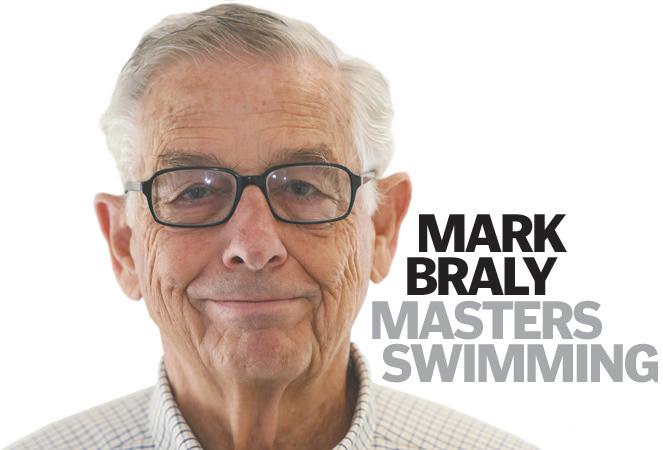What sort of trouble can four football fans cause?
— Page B2
THE


— Page B2
THE


The City Council on Tuesday unanimously endorsed Mayor Will Arnold’s statement last week about the killing of Tyre Nichols by Memphis police officers.
Nichols was detained on Jan. 7 by those police officers and video released last week shows them kicking and beating him, resulting in his death several days later. The officers have been fired and charged with murder.
In his statement on Friday, Arnold said, “the murder of Tyre Nichols at the hands of Memphis police is the latest in a series of horrifying incidents in our country.
“The use of excessive force and failing to intervene or render aid are crimes and should be punished as such. This infuriating brutality is unacceptable...”
He also said that “public trust is paramount in our public safety system.

“The city of Davis and the City Council continue to prioritize initiatives and actions that work toward safeguarding this trust.”
See STATEMENT, Page A5
FRIDAY, FEBRUARY 3, 2023


UC Davis students protest in Davis on Sept. 24, 2021, demanding an end to fossil-fuel use across the UC system.
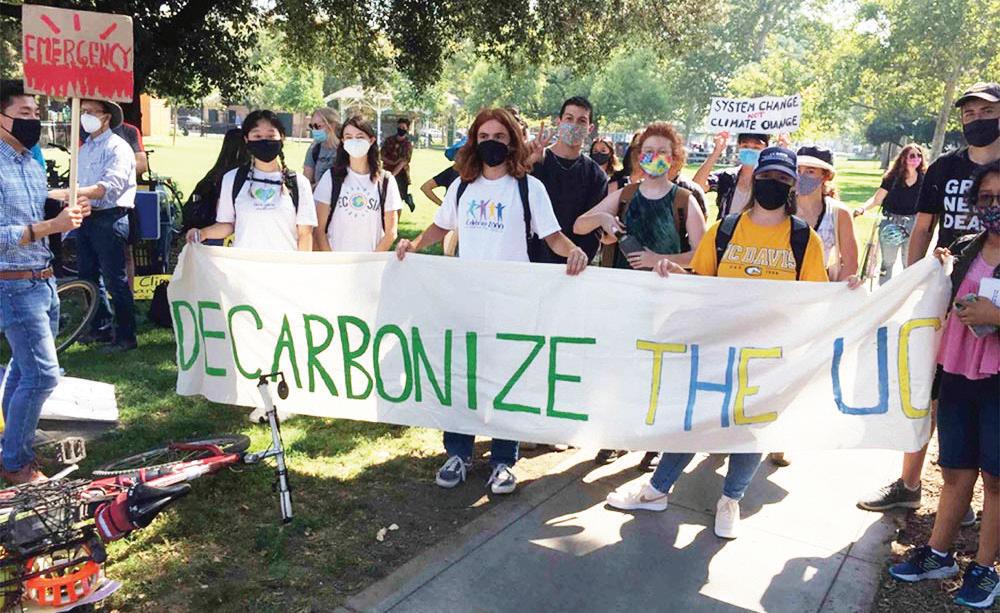
“The challenge is that we burn fossil fuel; in particular, we burn a lot of natural gas at UC Davis to run a set of steam boilers and a co-generation plant. In the case of UC Davis, it’s basically like a giant jet airplane engine fired by natural gas that produces both heat we use to make steam and electricity, hence the ‘co’ in cogeneration.”
That was Camille Kirk, UC
Davis director of sustainability and campus sustainability planner, as recorded at the Fossil Fuel-Free Pathway Plan Town Hall on Nov. 18.
“It’s a wonderful technology, except it runs on natural gas,” Kirk said. “The challenge is not only that we burn fossil fuel, but that science is telling us that this is an accelerating problem, and the science, much of which has been done even here at UC Davis and across the UC, is quite clear on this. It is
anthropogenically caused, and the pace is accelerating. It’s urgent, and the time to act is now. Every year that we delay is a year that it gets harder.”
Sponsored by the UC Davis Campus Advisory Committee on Sustainability, the town hall shared findings from the committee’s draft of the Fossil FuelFree Pathway Plan.
Besides the steam boilers in the co-generation plan, UC Davis has a large fleet; people commute to campus or to UC


WOODLAND — An alleged road-rage shooting in West Sacramento last summer was both reckless and negligent, in the eyes of a Yolo Superior Court judge.
But whether it amounted to attempted murder may be for a jury to decide.
Visiting Judge Stephen Mock dismissed the most serious charge against Akuila Tuikilakila Vabasi on Monday following a preliminary hearing where prosecutors outlined their case against the former Davis resident.
Vabasi stands accused of shooting at another vehicle following an Aug. 27, 2022, fender-bender collision on a West Sacramento freeway onramp. The bullet struck, but didn’t penetrate, a natural-gas tank that powered the Honda Civic carrying a family with three children inside.
Mock upheld three other counts of discharging a firearm at a vehicle, assault with a semiautomatic firearm and hitand-run, along with several enhancements for prior criminal convictions. Vabasi, 37, previously pleaded not guilty to the charges.
Monday’s hearing included testimony from four California Highway Patrol officers who investigated the shooting, which prosecutors say targeted a Napa family on their way to Apple Hill.
As they traveled through West Sacramento, the driver — identified in court documents as “Y.S.” — noticed his fuel running low and searched for a naturalgas station nearby. Unfamiliar with the area, he missed his intended exit and got off on Reed Avenue instead.
That’s where the chaos began.
See SHOOTING, Page A4
Davis Medical Center locations, Kirk explained. “We also fly on planes to accomplish our mission. So that might be field research, going to conferences, meetings, or athletics travel. So we have all these different ways we’re using fossil fuels to accomplish our business purposes every year,” Kirk said.
The plan for all of UC Davis, including UC Davis Health, is intended to move most


The city’s annual Fourth of July celebration will continue to feature a fireworks display in Community Park.
The City Council was evenly divided Tuesday night on whether to continue with fireworks or find an alternative way to end the holiday, and with a 2-2 vote, the status quo held.
However, while the city’s July 4 fireworks show will continue, that won’t be the case for Celebrate Davis, the annual event in Community Park hosted by the Davis Chamber of Commerce which has also long

featured fireworks. The council voted unanimously Tuesday to prohibit fireworks in Davis except for the July 4 celebration beginning in 2024, making this year the final year that Celebrate Davis can feature fireworks.

Council members also directed staff to work with the chamber on coming up with alternative entertainment for Celebrate Davis, including a possible drone show with city support.
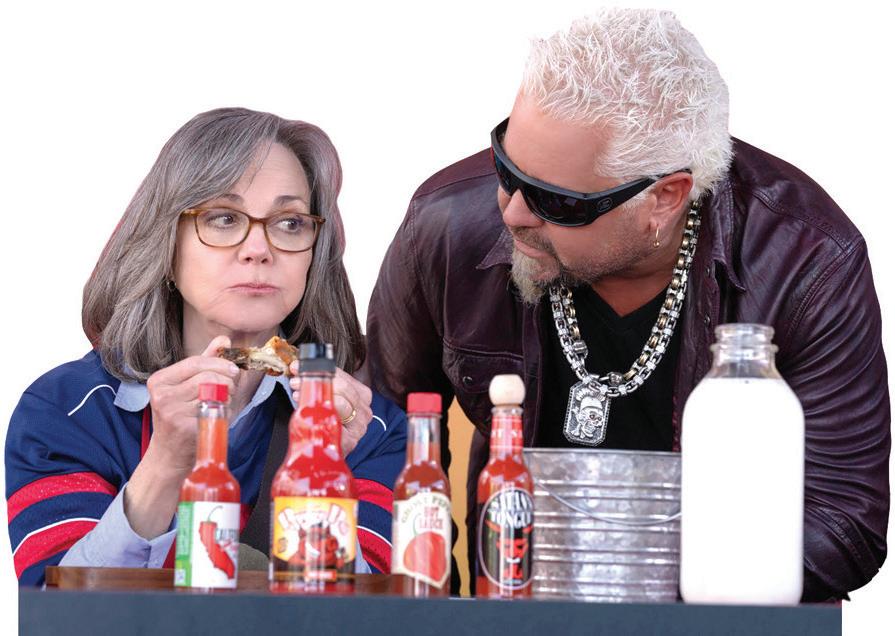
Councilwoman Gloria Partida had advocated for a drone show for the Fourth of July celebration as well, enterpriSe photo
See FIREWORKS, Page A5
Fireworks lit up the night sky over Community Park in 2019 to close the city of Davis’ Fourth of July festivities.
In a world saturated with online music apps and podcasts, college radio’s free spirit and eclectic programming cuts through the noise. There are more than 600 college radio stations in the United States and they play a critical role in giving airtime to emerging musicians and local broadcasters.
On the latest episode of Timeout Radio, host Rohan Baxi talks to Patrick Figueroa, sports director at KDVS 90.3 FM at UC Davis about how the campus radio station teaches students broadcast production skills and provides its audience with diverse, noncommercial, and freeform radio.
In this episode’s travel segment, listeners will learn about Argentina — home of one of the oldest university radio station in the world, the highest and lowest points in the Southern Hemisphere, soccer legends Messi and Maradona, and a national sport called duck.
Timeout Radio is a radio show and podcast based in Davis for youths. It airs on KDRT 95.7 FM from 5:30 to 6 p.m. Tuesdays and 8 to 8:30 a.m. Saturdays.

All episodes are archived at https:// kdrt.org/program/ timeout-radio. You can follow Timeout Radio on Instagram @timeout.radio and Facebook @TimeoutRadio.
“California bill would ban drivers under 21 from hands-free phone use,” said the headline in The Sacramento Bee over a story by Andrew Sheeler.
So, is this about driver safety or just another blatant example of age discrimination?
“In a bid to crack down on distracted driving, a California lawmaker has introduced a bill to ban young people from talking on the phone while behind the wheel — even if they are using a hands-free device,” the story begins.
“Assembly Bill 276, by Assemblywoman Diane Dixon, R-Newport Beach, would prohibit drivers aged 18-20 from using a handsfree device to talk on the phone. California law already prohibits drivers younger than 18 from doing so.”
Fair enough. I’m all for making our streets and highways safer. There are all sorts of reasons why we have traffic accidents, but certainly the various forms of distracted driving are high on the list.
Of course, there are many distractions we encounter while driving beyond talking on the phone.
You may be distracted because the contents of the Big Mac you’re trying to eat while driving onehanded just slipped out of their sesame-seed bun and two all-beef patties, special sauce, lettuce, cheese, pickles and onions all just landed on your crotch as you head for an important job interview.
The explosion of drive-through coffee kiosks has no doubt increased the number of distracted drivers on the road. I mean, there is nothing more distracting than trying to drink a cup of freshly brewed, scalding-hot
coffee while driving. And if you spill that hot coffee on your upper thigh, watch out.
Clever billboards can be distracting. I remember in the days of the old Burma Shave jingles there would be five or six roadside signs in a row and you had to read all of them to get the complete message. Since the signs were off in a nearby cow pasture, your eyes were clearly not on the road.
Billboards with phone numbers are especially distracting because you may be concentrating on the number for several seconds so you can memorize it.
An ad on the car radio offering “90 percent off to the first 100 callers” may well make you dial your phone while driving.
Assemblywoman Dixon said she did some research and claims “the under-21 age group is where the accidents are happening.”
Certainly it’s where some of the accidents are happening, but the same Bee article noted that of the
3,142 people who died in distraction-related accidents in 2020, 186 were teens aged 15 to 19.
Turns out that’s 6 percent of the total, which makes me wonder about the other 94 percent. Plus, we don’t know how many of those 186 teens who died were actually driving the car and how many were simply passengers.
In other words, if the data is correct, we now know that 6 percent of those who died because of distracted driving were aged 15 to 19, and that 94 percent of those who died because of distracted driving were from other age groups. If we determine that the highest fatality rate occurred among male drivers aged 35-39, shouldn’t we aim the law at that group as well?
So, if Assemblywoman Dixon is willing to extend her ban to all drivers, she has my vote.
Otherwise, it’s just another way to blame teenagers for bad behavior that all age groups engage in.
— Reach Bob Dunning at bdunning@davisenterprise.net.

Burt McNaughton
SUBSCRIPTION RATES FOR CARRIER DELIVERY (plus tax)
Home delivery $3.69 per week
Online $3.23 per week 12 weeks $44.84

weeks $89.30
weeks $159.79
The last day of services provided by the OptumServe COVID-19 test-totreat mobile bus in Yolo County will be Sunday.

The bus will close at noon on Feb. 5 as state funding for the service has been closed out as part of the planned ending of California’s COVID-19 state of emergency on Feb. 28, the county reported Wednesday.
Yolo County’s Health and Human Services Agency will continue to provide free COVID-19 antigen tests at numerous locations across Yolo County, including via the vending machine at the Davis library.
Antigen tests are available at public libraries throughout the county and at a total of five outdoor vending machines (the Davis library at 315 E. 14th St.; the Esparto regional library at 17065 Yolo Ave.; the West Sacramento Community Center at 1075 W. Capitol Ave.; Winters City Hall, 318 1st St.; and Woodland’s La Superior Market, 34 W. Court St.).
Additionally, the county noted in a press release Wednesday, every household can order four free antigen tests from the federal government at http://
www.covid.gov/tests. Individuals with health insurance are eligible to receive eight free antigen tests each month through their insurance provider.

“Safe and effective treatments for COVID-19 are available for persons who test positive for COVID-19 and have symptoms,” the press release said.
“Persons with symptoms are encouraged to contact a healthcare provider early on in their illness before symptoms become severe. Individuals without a regular healthcare provider or who aren’t able to reach their provider quickly can access free virtual COVID19 telehealth services from Sesame Care online or by calling 833-686-5051. COVID-19 medications (Paxlovid or molnupiravir) are free and can either be mailed or picked up at a pharmacy.”
County Health Officer Dr. Aimee Sisson said, “The closing of the test-to-treat mobile bus on Feb. 5 does not mean the end of free testing or treatment resources in Yolo County.
“Free antigen tests are still widely available in county-run vending machines and at libraries, and free telehealth services are available through Sesame Care online or by phone to access free
COVID treatments,” she said.
The COVID-19 pandemic is not over, and the virus that causes COVID19 continues to circulate, Sisson said.
“Residents are encouraged to maintain protection against COVID-19 by staying up-to-date with vaccination. Bivalent boosters are widely available at clinics and pharmacies in Yolo County. A single dose of a bivalent booster is recommended for everybody 5 years old and older if at least 2 months have passed since their last dose of a COVID vaccine. In addition, children between 6 months and 5 years old are eligible for a bivalent booster (Moderna) or bivalent third dose (Pfizer). Bivalent boosters are especially important for adults 65 and older, whose immunity fades most quickly.”
In addition to vaccination and remaining up-todate with boosters, Yolo County residents are encouraged to protect themselves and others against COVID-19 and other respiratory viruses like influenza and respiratory syncytial virus (RSV) by wearing high-quality masks indoors, washing their hands regularly and staying home when they
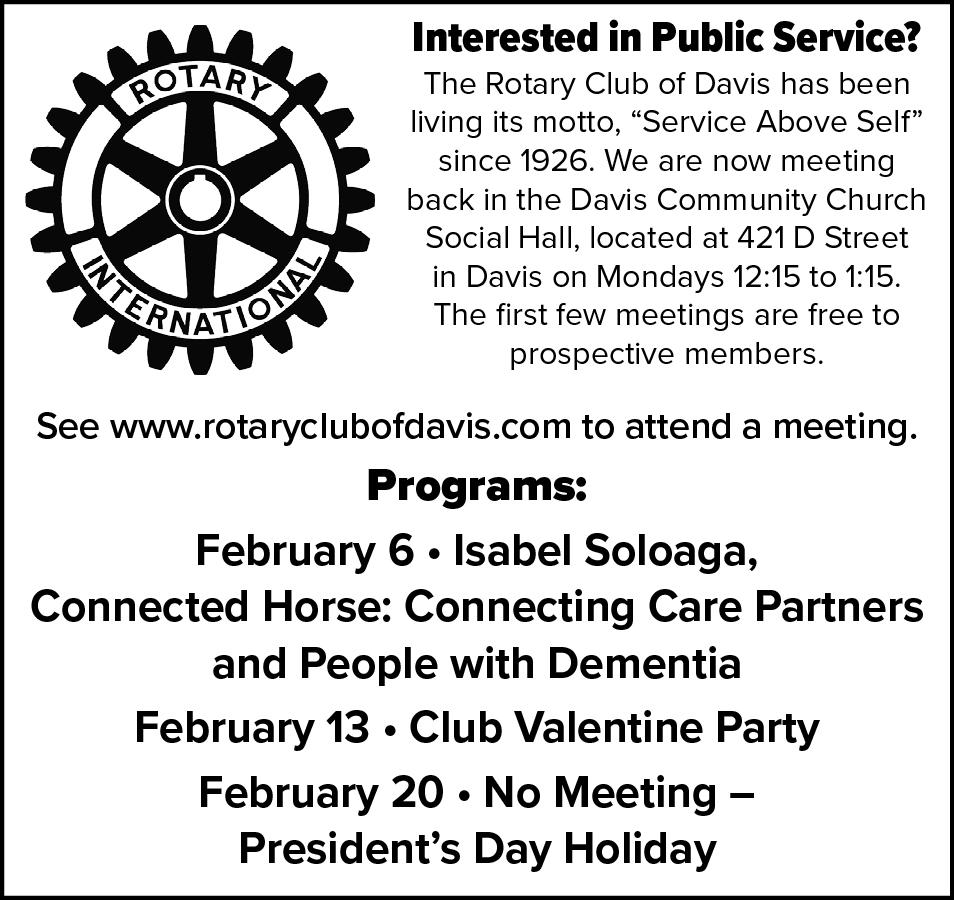
Special to The Enterprise
SACRAMENTO — State Sen. Bill Dodd, D-Napa, introduced legislation today that would allow the city of Davis to create endangered species preserves and support climate mitigation projects.
“With this proposal we take steps to both preserve endangered species and our precious environment,” Sen. Dodd said. “It is a smart use of public land, in keeping with the wishes of Davis voters. It will protect and enhance our community for generations to come.”
Senate Bill 256 would modify the terms of a
voter-approved bond act, Proposition 70 of 1988, which provided $1.97 million for the purchase of natural lands in the city of Davis. Under the bill, the city would convey easements of the land to Yolo Habitat Conservancy for preservation of targeted species.
Also, the city could convey easements to a third party for the purpose of capturing carbon from renewable biomass energy activities, deep underground, for climate mitigation.
“The city of Davis values all the work that has gone into this bill that will provide us with the ability to place easements on natural
The Davis Police Department is investigating a bomb threat that targeted Holmes Junior High School late Thursday morning.
Lt. Dan Beckwith said officials at the Drexel Drive campus learned of the threat at about 11:50 a.m., resulting in the evacuation of students and staff.
lands purchased from Prop. 70 funds,” said Davis Mayor Will Arnold. “Habitat preservation and climate mitigation are important focuses for the city as we pursue environmentally sustainable opportunities.”
“They're all safe,” Beckwith reported early Thursday afternoon. Students later moved from the school's track area to Chestnut Park, where parents and guardians made arrangements to pick them up.
Davis police cleared the scene at about 3:45 p.m. after a sweep of the campus yielded nothing suspicious. No suspects were

immediately identified, although anyone with information is asked to contact investigators at 530-747-5400.
“In consultation with the Davis Police Department, we have determined the Holmes Junior High campus is safe, and school will resume as normal tomorrow morning,” the Davis Joint Unified School District officials posted on the district's Facebook page. “We appreciate and thank DPD for their partnership and ongoing commitment to the safety of our students and staff.”
This marked the third time that Holmes received a bomb threat over the past year, the prior incidents occurring in May and October 2022. Police determined both to be unfounded.
Special to The Enterprise
Lots of animals are waiting for “forever homes” at the Yolo County Animal Shelter, 2640 E. Gibson Road in Woodland.
Among them is Astrid (A198285), a lovable 1-year old pit bull mix who has been looking for her forever home since summer. Astrid is a pocket pittie with a stunning brindle coat and dreamy eyes. She’s an energetic girl who loves the great outdoors. Astrid gives hugs, walks beautifully and always checks in. Astrid has a cherub face and is always smiling.
Also hoping for a good home is Stewie (A200149), a 2-year-old German shepherd with beautifully expressive eyes who aims to please. Stewie is a big boy and gentle giant, with a calm energy who takes it all in on long walks. Stewie will be your best buddy on hikes or love just hanging out at home.
The Gobi Desert is a hot, rocky and unforgiving landscape, but it was not always that way. During the Cretaceous Period it was likely covered by forests, streams and lakes.
It is unclear if the landscape was seasonal or not, as evidence of sand dunes is also found in the area, contributing to the wellpreserved fossils in the region. Fossils found in the region include turtles, lizards, small mammals, and even dinosaurs.
crate-trained, walks on leash, is gentle natured and well socialized. Clark would make a great family dog or a new best friend for a single person.

Clark is definitely a volunteer favorite.
Stormy, a super-sweet 1-year-old (soon to be spayed) female Rottie/ Lab/shepherd mix, is the mother to eight chubby, happy pups — two girls and one boy — born Jan. 6. When they are 6 weeks old (around Feb. 17), they will be weaned and Stormy will be spayed. She would be then be able to go to her new home after her spay recovery. She’s a lovely, gentle-natured dog who loves kids and other dogs. Her pups will be available for adoption in the next couple of weeks and will be able to go home March 4.
The next Rotts of Friends adoption event is from 8 to 11 a.m. Saturday, Feb. 4, at 34505 County Road 29 in Woodland. Come by 10 a.m., as it takes at least an hour to meet and adopt a dog; everyone who will be living with the dog should come out to meet it.

For information on adopting, contact adoptycas@gmail.com. All shelter animals are upto-date on vaccinations, microchipped, and spayed or neutered. Staff is available to assist via phone during business hours at 530668-5287. Shelter hours are 10 a.m. to 5 p.m., Monday to Friday, and 10 a.m. to 4 p.m. on Saturdays. To meet any adoptable YCAS animals, visit friendsofycas.org. To volunteer, sign up at tinyurl. com/yolovolunteerapp. Follow on at @ycas.shelter and Instagram at @ yoloanimalshelter.
At Rotts of Friends Animal Rescue, you’ll find Clark, a 1½-year-old neutered male setter/ pointer mix. He’s very friendly,

Bring proof of homeownership, such as a mortgage statement or property tax bill. If you rent, bring proof that you are allowed to have a dog in your home, such as a pet clause in your lease or a note from your landlord.


All dogs adopted from Rotts of Friends are healthy, microchipped, up-to-date on their vaccines and come with free lifetime obediencetraining classes. For information, visit facebook.com/rottsof friends.
One of the most famous discoveries from the Gobi Desert is dinosaur eggs.
Led by explorer Roy Chapman Andrews, the expedition found the first scientifically recognized dinosaur eggs in 1923. Although other eggs had been documented prior to this in other places in the world, the ones in 1923 were the first to be recognized as coming from dinosaurs.
One of the dinosaur species found in the Gobi Desert is protoceratops. Also discovered in the 1923 Andrews expedition, protoceratops is a small ceratopsian dinosaur, it is best known for having a proportionally large head, including a bony frill and a parrot-like beak. This herbivorous dinosaur walked on all four legs and was only between 6 and 8 feet long.
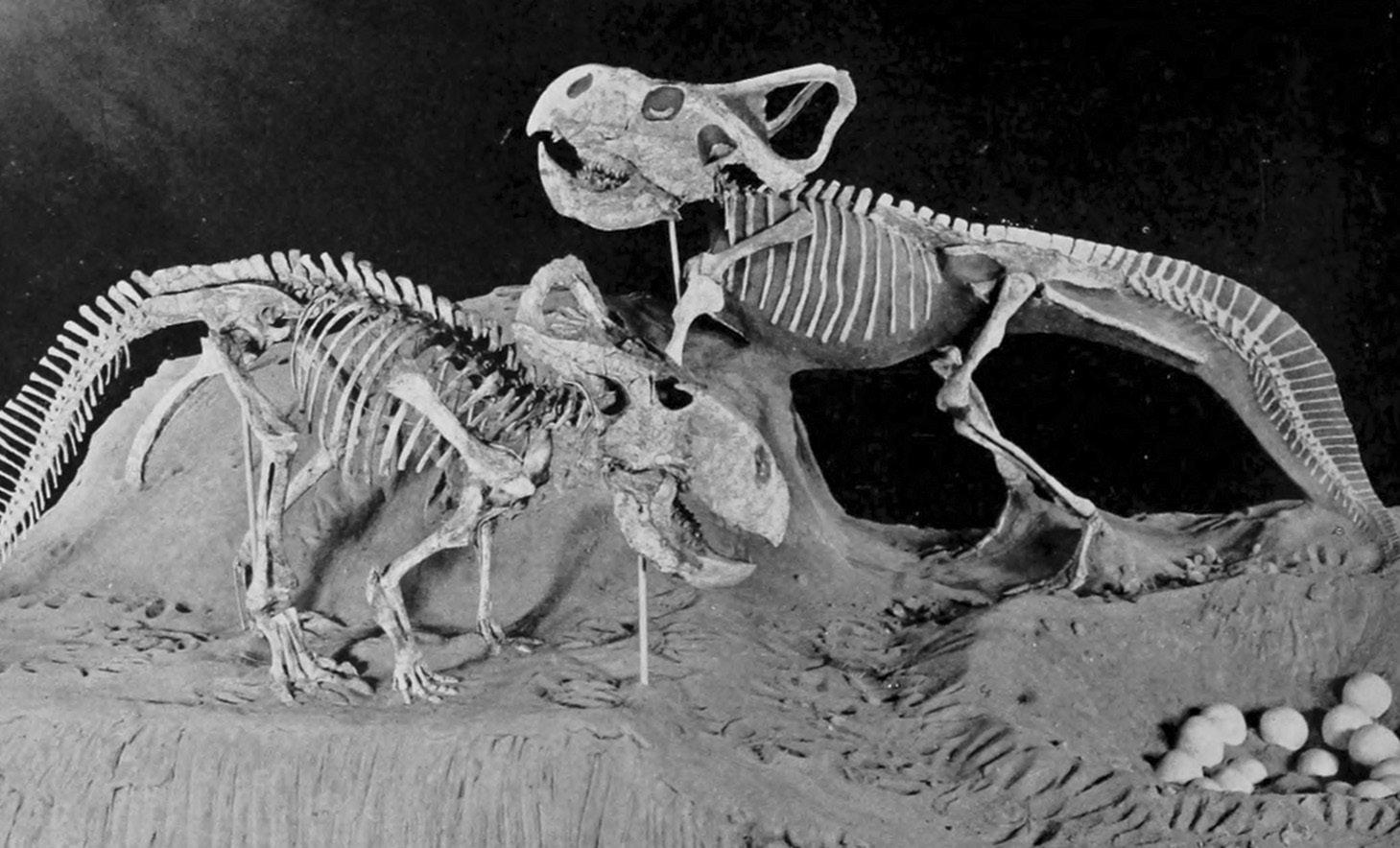
Another abundant dinosaur from the region is
velociraptor. First described from a complete skull and single toe claw, this dinosaur has become one of the most well known in popular culture. Unlike those portrayed in the media, velociraptor was actually much smaller. Not much longer than 7 feet, it also stood less than 2 feet high. Assemblages and trackways indicate this predator may have lived in small groups, hunting in packs to take down larger prey.
Oviraptor, once thought to be an egg thief as its name suggests, is actually a dedicated parent. The eggs found in 1923 by Andrew’s expedition belonged to oviraptor, but it wasn’t until 1990 that they would be associated together when an adult
was found sitting atop a clutch of eggs. The position of the animal, with its forelimbs positioned back and out, would completely cover a clutch of eggs by the feathers now accepted as part of these animals. Learn more about dinosaurs, their eggs, and those that study them at our exhibit “Explorit Rocks!” open to the public on Fridays from 1 to 4 p.m., and Saturdays and Sundays from 10 a.m. to 2 p.m.
Admission is $5 per person. Explorit members, ASTC, and those age 2 and under are free.
Explorit’s coming events:
n A membership to Explorit grants the recipient free visits to Explorit’s regular public hours, discounts on events, summer camps and workshops, and gives you ASTC benefits to
visit other museums throughout the world. To purchase or for more information visit https:// www.explorit.org/membership or call Explorit at 530-756-0191.
n School programs are available to schedule. We have educational programs that travel to schools and options for field trips at our facility. Please call 530-756-0191 for more information or to schedule.
n Now is a great time to donate and help Explorit continue to educate and inspire the scientists of tomorrow: https://www. explorit.org/donate.
— Explorit Science Center is at 3141 Fifth St. For information, call 530-7560191 or visit http://www. explorit.org, or "like" the Facebook page at www. facebook.com/explorit.fb.

Spring is the sweet spot for breeding songbirds in California’s Central Valley — not too hot, not too wet. But climate change models indicate the region will experience more rainfall during the breeding season, and days of extreme heat are expected to increase. Both changes threaten the reproductive success of songbirds, according to a study from UC Davis.
The study, published Jan. 16 in the journal Biological Conservation, details how extreme heat and rainfall patterns have impacted songbirds along the Putah Creek Nestbox Highway in Yolo County.
While centered in the Central Valley, the study serves as a warning for other Mediterranean ecosystems.
“The changes happening in California’s Central Valley — increasing temperatures, wetter springs, greater variability — those impacts are happening across Mediterranean landscapes,” said lead author Jason Riggio, a postdoctoral scholar with the UC Davis Museum of Wildlife and Fish Biology. “In spaces where birds are already in an extremely variable climate, small changes will make a big difference.”
The study also offers signs that some birds adapt to modified systems. For example, western bluebirds and tree swallows are finding as much reproductive success in orchards near Putah Creek as in their natural habitat. For these species, the orchards are not the ecological traps researchers initially expected them to be. Other species prefer to build their homes in riparian forest and grassland habitats.
Climate models predict that regional precipitation is expected to decrease from October-January and to increase from February-April — pushing into the birds’ breeding season. Also, an estimated 5.4 degrees Fahrenheit increase in average maximum temperature by 2100 will
challenge species already at their temperature limits.
To study the impacts of these changes on songbirds, the researchers analyzed 11 years’ worth of data collected by Nestbox Highway project staff and its cadre of undergraduate interns from the UC Davis Museum of Fish and Wildlife. This included 2,305 nesting attempts and more than 7,100 nestlings across four species of cavitynesting songbirds — western bluebirds, house wrens, tree swallows and ash-throated flycatchers.
They found that bird fitness declined amid extreme precipitation or temperatures. Wetter nesting periods lowered reproductive success and nestling weight in house wrens, tree swallows and western bluebirds. Higher temperatures during the breeding season also resulted in lower reproductive success and nestling weight for all four species.
“Across these results, it appears the effects of climate change in California’s Central Valley —and in Mediterranean systems globally — are likely to have broad and mostly negative impacts on cavity-nesting songbird reproduction,” Riggio said.
He adds that there are still pockets of songbirds doing well in both natural and modified habitats, and that protecting the fragments of habitat left can benefit species confronting environmental changes.
Study co-author Melanie Truan, a research ecologist with the UC Davis Museum of Wildlife and Fish Biology, began the Nestbox Highway in 2000 as a graduate student in an effort to bring songbirds back to Putah Creek.
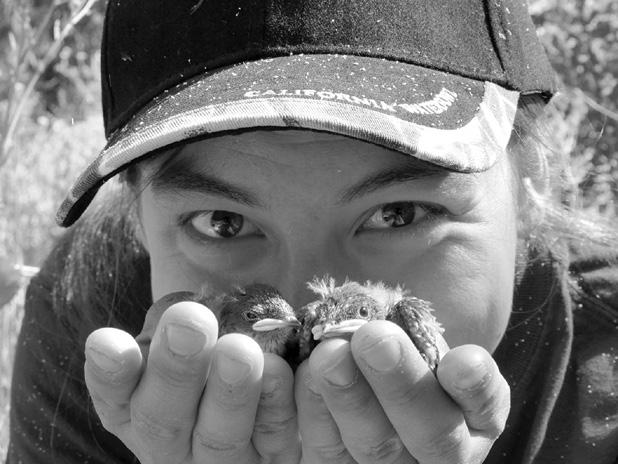
Many native cavity-nesting songbirds had lost their nesting opportunities as non-native birds increased and as large trees with the holes they favored were replaced by agricultural and other land uses. Western bluebirds, once abundant in the region, had become largely non-existent in the area.
One hundred nest boxes were installed that first year, attracting a family of bluebirds, among other birds. Now, more than 200 boxes draw hundreds of bluebirds—and several other bird species—to Putah Creek and the surrounding region. Staff and undergraduate interns check the boxes weekly to record the progress of nesting attempts, eggs and nestlings. Before fledging, all nestlings are measured and banded.
“The Nestbox Highway project is the most uplifting and encouraging part of what I do,” said Truan. “I’m so happy this project that started as a let’s-see-what-happens conservation and education project is turning into something that can provide data for research.”
The study also highlights the importance of long-term data sets to help unravel the impacts of climate and land-use change on birds and other species.
The study’s additional coauthors include Andrew Engilis Jr., Hanika Cook, Evelien de Greef and Daniel Karp of UC Davis.
The study was funded by the Solano County Water Agency. It would not have been possible without the support of participating landowners and land managers, and the interns and staff of the UC Davis Museum of Wildlife and Fish Biology. — UC Davis News
Today-Sunday
n The Friends of the Davis Public Library February book sale will be indoors in the Blanchard Room at Stephens Branch Library, 315 E. 14th St., from Friday through Sunday. Hours are noon to 7 p.m.
Friday, Feb. 3; 10 a.m. to 5 p.m. Saturday, Feb. 4; and 10 a.m. to 3 p.m. Sunday, Feb. 5. Sunday is $10 bag day. All members will receive $2 off their purchase at every monthly sale. The Friends have a large supply of puzzles and DVDs. Puzzles are priced as marked, and DVDs are $1 each. If you have any questions about your membership, or to update contact information, send a message to membership@davis libraryfriends.org.
Wednesday
n Join Project Linus to make blankets for children who are seriously ill, traumatized or otherwise in need. Come to our gathering from 1 to 3 p.m. at the Davis Senior Center, 646 A St. Contact Diane McGee and sign up for the email list to receive detailed information and updated meeting time changes. All are welcome to attend the meeting and help sew Linus labels on handmade blankets that will be given to Yolo County organizations that serve children in need. Project Linus members may take home donated fabrics and yarn each month to complete a blanket. Finished blankets can be brought to the next monthly gathering or to the Joann Fabric store in Woodland. For general information, drop-off location questions or fabric and yarn donations, contact McGee at dmmyolo@gmail.com.
n Davis Science Café presents “Preventing
Broken Hearts: Understanding and Treating Heart Disease in Women” from 5:30 to 7 p.m. at G Street WunderBar, 228 G St. in downtown Davis. Each month, Professor Jared Shaw of the UC Davis Department of Chemistry hosts the Davis Science Café, featuring scientists who are studying some of today’s cutting-edge topics. This month’s speaker is Prof. Amparo Villablanca from UC Davis Health who studies the sex differences in the molecular and cellular determinants of cardiovascular disease. The event is free to attend, with complimentary soft drinks courtesy of the UCD College of Letters and Science. Contact Shaw for information at jtshaw@ucdavis. edu or https://twitter. com/DavisSciCafe1.
n The UC Davis Arboretum hosts a Folk Music Jam Session from noon to 1 p.m. Folk musicians can bring their acoustic instruments and play together informally during this jam session at Wyatt Deck (next to the redwood grove). Pull out your fiddles, guitars, mandolins, penny whistles, pipes, flutes, squeezeboxes (you name it) and join your fellow musicians for a little bluegrass, old-time, blues, Celtic, klezmer and world music over the lunch hour. All skill levels welcome and listeners are invited. Short-term parking is available in
Visitor Lot 5 on Old Davis Road at Arboretum Drive. Hourly rates start at $1.75.
n The Kiwanis Club of Davis will host its 41st all-you-can-eat Crab and Pasta Feed on Friday, Feb. 10, at the Veterans Memorial Center, 203 E. 14th St. in Davis. The social hour starts at 6 p.m. and dinner is served at 7 p.m. Tickets are $75, available by calling George Barden at 530756-1332 or Rich Seropian at 530-400-4830. Proceeds benefit Kiwanis charities.
n Logos Books will host a 2nd Friday ArtAbout reception from 6 to 8 p.m. for artist Karen Fess-Uecker as part of her show, “A little bit of Davis, a lot of California,” plein air and studio oil paintings. Fess-Uecker’s work will be up at the bookstore, 513 Second St. in downtown Davis, from Feb. 4 to March 3.
Saturday, Feb. 11
n Stories on Stage Davis will present two novel excerpts at the Pence Gallery, 212 D St. in downtown Davis. Doors open at 7 p.m., and the event starts at 7:30. Masks are strongly encouraged but not required. Martha Omiyo Kight will read from “Meadowlark” by Melanie Abrams, and Larry Lew will read from the novel “The Thousand Crimes of Ming Tsu” by Tom Lin. Stories on Stage Davis is a sponsored project of YoloArts, a nonprofit arts organization. The event is free to attend, and Stories on Stage appreciates donations at the door. For more information, including previous podcast episodes and live events, go to the Stories on Stage Davis website: storiesonstagedavis.com.
Thursday, Feb. 16
n The Davis Friends Meeting will sponsor a talk by Craig McNamara about “Coming to Terms with the Legacy of My Father Robert McNamara, One of the Architects of the Vietnam War,” at 7 p.m. at 345 L St. in Davis. Craig McNamarea, a Winters-area farmer, will discuss his recently published memoir, “Because Our Fathers Lied,” which is a moving reflection upon his relationship with his father. Craig relates in his memoir his life’s journey from protesting the Vietnam War, learning agricultural practices from indigenous farmers in South America, studying agriculture at UCD, and starting his own farming business.
Sunday,
n The Davis Odd Fellows Classic Film Festival presents “I Was a Male War Bride” from 1949, starring Cary Gant and Ann Sheridan. The first in a series of three “military comedies,” the Odd Fellows will be showing on the big screen in the Upper Hall, 415 Second St. Parking on Sunday is free and plentiful. Doors open at 6:29 p.m. and the program begins at 7:01 p.m. The Odd Fellows bar, with wine, beer and soft drinks at reasonable prices is always open before and during the film. Popcorn is always free. And before the film, audience members enjoy the live music of Rene Martucci and Richard Urbino (“Cold Shot”).
As Y.S. prepared to reenter the freeway, “he felt a bump on the rear of his vehicle at the base of the on-ramp,” CHP Officer Peter Phurchpean testified. The man looked in his rearview mirror and spotted a black pickup, which veered to the left “as if to flee the scene.”
“He used his vehicle to block the path of the black truck, and that’s when another collision occurred,” Phurchpean said. At that point, the driver of the truck pulled up to the right of the victims’ car, began to yell and brandished a handgun.
“He has a gun!” exclaimed Y.S.’s wife, who dove into the back seat to shield the couple’s three children. Y.S. accelerated onto the freeway, “and that’s when he heard a gunshot,” Phurchpean said. Another motorist who witnessed the confrontation — but didn’t hear the gunshot — briefly followed the black truck and obtained a license-plate number, which the CHP used to trace the Nissan Titan to one of Vabasi’s
relatives in Davis.
Investigators found the truck outside an Oak Avenue residence and seized the vehicle, finding a bag containing a 9mm semiautomatic handgun inside, according to officers’ testimony.
CHP Officer Matthew Sprague, an expert in bullet trajectory, testified that the projectile struck the right rear of the Honda and entered the passenger compartment, hitting the natural-gas tank that extended across the width of the trunk.
Another CHP investigator, Leo Smith, said he questioned a cousin of Vabasi’s who sat in the truck’s passenger seat on the day of the incident.
“He said there was a collision, and that Aku had pulled out a gun” from the truck’s center console, Smith said. The cousin said he heard Y.S.’s wife shout there were kids in their car, but denied Vabasi fired the pistol.
Vabasi’s public defender, Jesse Gonzalez-Vasquez, questioned the CHP officers about the tinting on the Honda’s rear windows, suggesting his client was
unaware there were children inside.
Gonzalez-Vasquez also began a line of questioning about a decal on the Honda’s rear window — apparently depicting an assault rifle — and seemed poised to argue Vabasi became fearful upon seeing it and acted in self-defense.
Ultimately, the attorneys sparred most over the attempted-murder charge, which Deputy District Attorney David Wilson said the evidence supports.
“For no legally valid reason, the defendant pulled a firearm on a family of five … and he fired a round,” Wilson said. “There’s no other reason to fire a round other than he wants to kill these people. That’s what firearms are used for — to destroy.”
Gonzalez-Vasquez, meanwhile, said his client believed he was in an “extremely dangerous situation.” He contended it was Y.S. who, while distracted and unfamiliar with the area, caused the initial collision and drove recklessly while trying to prevent Vabasi from driving away.
“I don’t think you can say unequivocally that the
intent was to kill anybody in that car,” GonzalezVasquez said, noting the bullet entered the vehicle near the rear wheel well. “There’s an inference there that they were trying to disable the car from doing what they were doing.”
The discussion then turned to who caused the initial collision, an issue Mock deemed irrelevant as, under any circumstance, “it doesn’t warrant the discharge of a firearm.”
“While I find that behavior not just negligent but angry and reckless, I don’t find that there’s sufficient evidence the defendant intended to kill,” Mock said. “There’s abundant evidence as to the other counts.”
With that, Mock ordered Vabasi, who posted bail following his Sept. 7 arrest, back to court on Feb. 16 for further proceedings.
Wilson, the prosecutor, indicated he may re-file the attempted-murder charge “with additional allegations.”
— Reach Lauren Keene at lkeene@davisenter prise.net. Follow her on Twitter at @laurenkeene

An internal circadian clock controls the distinctive concentric rings of flowering in sunflowers, maximizing visits from pollinators, a new study from plant biologists at UC Davis shows. The work was published Jan. 13 in eLife.
A sunflower head is made up of hundreds of tiny florets. Because of the way sunflowers grow, the youngest florets are in the center of the flower face and the most mature at the edges, forming a distinctive spiral
pattern from the center to the edge.
An individual floret blooms over a couple of days: on the first day, it opens the male part of the flower and presents pollen; on the second day, the female stigma unfold to receive pollen. Somehow, florets coordinate so that they open in concentric rings starting from the edge and moving inward on successive days, with a ring of female flowers always outside the earlier-stage, pollen-bearing male flowers.
Pollinating bees tend to land on the ray petals around a sunflower head and walk toward the center, said
senior author Stacey Harmer, professor of plant biology, UC Davis College of Biological Sciences. That means that they will pick up pollen after they have walked over the female florets, then carry it to a different flower head.
Harmer and postdoctoral researcher Carine Marshall wanted to understand how the spiral pattern of florets turns into concentric rings of flowering. Harmer’s lab had previously established that circadian rhythms control how growing sunflowers track the sun during the day. — UC Davis News
DYLAN P HYATT (SBN 278125) Meissner Joseph Palley & Ruggles Inc
NOTICE OF PETITION TO ADMINISTER ESTATE OF Gail Lyn Blue CASE NO PR2023-0011
To all heirs, beneficiaries, creditors, contingent creditors, and persons who may otherwise be interested in the will or estate or both of: Gail Lyn Blue
A Petition for Probate has been filed by: Jason Blue in the Superior Court of California County of: Yolo
The Petition for Probate requests that: Jason Blue be appointed as personal representative to administer the estate of the decedent The petition requests authority to administer the estate under the Independent Administration of Estates Act (This authority will allow the personal representative to take many actions without obtaining court approval Before taking certain very important actions however the personal representative will be required to give notice to interested persons unless they have waived notice or consented to the proposed action ) The independent administration authority will be granted unless an interested person files an objection to the petition and shows good cause why the court should not grant the authority
A hearing on the petition will be held in this court as fol-
lows: Date: March 2 2023 Time: 9:00 A M Dept : 11 Room:
Located at 1000 Main Street Woodland CA 95695
If you object to the granting of the petition, you should appear at the hearing and state your objections or file written objections with the court before the hearing Your appearance may be in person or by your attorney
If you are a creditor or a contingent creditor of the decedent, you must file your claim with the court and mail a copy to the personal representative appointed by the court within the later of either (1) four months from the date of first issuance of letters to a general personal representative as defined in section 58(b) of the California Probate Code or
The statement also noted that the Davis Police Department “is committed to serving community members with dignity and respect for all human life.”
Davis police officers, said Arnold, “are guided by the principle of reverence for human life in all investigative, enforcement and other contacts. The department supports many additional initiatives and actions to help create an environment and culture of trust. We know there is always more work to be done, as we continue our efforts to build transparency, engagement and shared safety for everyone in our community.”
His colleagues on the council voted unanimously in favor of making Arnold’s statement a statement of the full Davis City Council. But at least one resident expressed opposition.
“Every local jurisdiction does not have to condemn this,” said Alan Miller. “We don’t live in Memphis and that’s what we have state representatives and national representatives for and the city of Memphis to deal with this.
“I’m not just saying this about this incident,” he said. “I’m talking about every single thing that doesn’t have to do with city of Davis business. The council shouldn’t even deal with any of it.”
Miller called the Nichols murder “horrible and atrocious,” but said, “I find it downright offensive that anybody would take this incident and then somehow float over hear
and attach it to the Davis Police Department.”
“This doesn’t have anything to do with five cops killing a person in cold blood. That’s just plain awful and they shouldn’t be linked ever.”
The Davis Police Department actually released a statement of its own about the killing on Friday before Arnold did.
That message, signed by the heads of multiple Yolo County law enforcement agencies, including Davis Police Chief Darren Pytel, said, “We find ourselves once again sickened at these divisive and senseless acts of police violence and abuse of power under the guise of law. We extend our sincere condolences to the grieving family and friends of Mr. Nichols and the Memphis and Sacramento communities in which he lived.
“We want to reassure the public that our agencies have strict policies in place that prohibit the use of unreasonable force, require officers to immediately intervene if excessive force is attempted or used, require a duty to immediately report all force, and provide immediate professional medical attention when needed. Officers are guided by the principle of reverence for human life in all investigative, enforcement, and other contacts between themselves and members of the public.”

On Tuesday, council members pushed back on Miller’s comments, explaining why a statement from the city was necessary.
“Local jurisdictions don’t
have to comment on this,” said Councilman Bapu Vaitla.
But sometimes, he said, “you feel like you’re living in a graveyard. It’s just bodies of people who are unjustly dead. Black bodies, native bodies, brown bodies, Asian bodies… and whether you’re a national representative, a state representative, a local representative, there is some power just to acknowledging that fact …
“Sometimes I also feel this sense of how precious and fragile things are,” said Vaitla. “And the truth is, and this is how I would link it to Davis, and why it’s important to make this statement… is that feeling of how close death is and how precious life is. We spend most of our time, me too, turning away from that. We live in our comfortable houses, in our pretty town and dedicate most of our energy to the preservation of convenience and familiarity … and we have the luxury of turning away from death while for some people, that’s the entirety of what they look at every day.”
But when something like the Memphis killing happens, Vaitla said, “even us, the privileged, can’t turn away. We have to face it … and it gives us a chance to think about where we put our energy, to put aside all the things that don’t matter …”
Councilwoman Gloria Partida weighed in as well, saying, “I also believe that it is important for leaders at all levels to make
statements or to make comments and to grieve with the community and to show leadership in the words that we present to our constituents.
“People at all levels turn to and expect their elected leaders to stand up and to let their positions be known and to use those positions to offer comfort, and this is a time where people need that comfort.”
She added that “it’s also an indication of who supports what.”
Vice Mayor Josh Chapman said, “part of it for me is … when these horrific scenes get played out and when they see them, when my sons see them, those images and the trauma that is created in those moments don’t stay within the lines of the city or the county or the state in which that incident happens. It affects all of us in our own way.
“As a council member, as a parent, as a member of this community that I love, I oftentimes find myself struggling around what it is that we can do to make meaningful progress. And how we can move the needle on that and how do we show folks in our own community here in Davis that are impacted by these things on a regular basis or have been impacted, that what we see isn’t what we expect from what we have here in Davis and it’s unacceptable. How do we show young people in this community that this will not and cannot be tolerated? And for me, that’s why it’s important to have these conversations.”
but given the prohibitive cost — an estimated $45,000 to $150,000 for a nine- to 11-minute show — she was unable to find support from her colleagues.
Meanwhile, Mayor Will Arnold and Vice Mayor Josh Chapman were firmly on board with keeping the July 4 fireworks celebration, while Partida and Councilman Bapu Vaitla favored ending the tradition.
As long as the council has just four members — something that will continue until the District 3 seat is filled following the May special election — split votes may occur, which is what happened Tuesday.
Tuesday night’s council discussion followed concerns raised by community members in recent years about the environmental impact of fireworks on air quality; the potential for fire during dry summer months; and the noise scaring pets and wildlife and impacting those suffering from post traumatic stress disorder.
After concerns were raised last year, Partida asked staff to research possible alternatives to fireworks.
Staff returned Tuesday with options that included:
n Keeping the traditional fireworks display, last held in 2022, at a cost of $27,000 for an 18-minute show;
n A low-level display costing about $20,000 for a 15-minute show. According to staff, a low-level display of fireworks would still have a noise impact but would be quieter. However, it would not necessarily be visible to anyone on the edges or outside of the park. The Chamber of Commerce used such a show for the 2022 Celebrate Davis event;
n A hybrid laser and fireworks show costing about $40,000 for an 18-minute show. Such a show includes both lasers and fireworks, with the lasers shot into the smoke of the fireworks to allow for better visibility. The show would require

From Page A1
operations away from fossil fuels.
UC Davis is in the middle of a $56 million project called The Big Shift, which involves converting building heating systems from steam to hot water pipes, laying the groundwork for electrification.
Back in 2021, UCD Chancellor Gary S. May asked CACS to prepare this plan after meeting with Fossil Free UCD, a grassroots climate group comprised of professors and students.CACS missed the Dec. 31 deadline for the Fossil Fuel Free Pathways Plan. In a memo from Dec. 22 to the Campus Advisory Committee on Sustainability, Kirk and CACS co-chair Jim Carroll asked for their support in completing the Executive Summary of the FFFPP “by sticking with us through February 2023.”
According to the memo, CACS has collaborated with nearly 100 campus constituents, including inperson and remote outreach via town halls, targeted email, and website updates, ensuring campus faculty, staff, students, non-affiliates, and the Fossil Free UCD constituency have had an opportunity to offer significant input on their evaluations.
papers, our University system does not practice what its scientific experts prescribe.”
Some of the parts of the fossil-free plan build on the “unequivocally good work” that a group of Davis campus staff has been doing over several years, Huising said. “For example, to retire our very old steam-based district heating system. An important point here is that the heating system needed to be replaced, and faced with replacement, building it to be far more efficient and potentially electrifiable was the cheapest way to go. In other words, good for reducing a substantive piece of our emissions and saving campus money compared to any other option.”
Wheeler explained total costs for replacing central heating and cooling plants would be at least $500 million per campus. However, such infrastructure needs to be maintained and replaced periodically anyway, and there will likely be operating savings from electrifying campus operations in the long run.
fewer fireworks since lasers would be added;
n A drone show, costing anywhere from $45,000 to $150,000 for a nine- to 11-minute show; or
n Some type of new event, without fireworks, to be held the Saturday before July 4. This would be in lieu of the traditional July 4 celebration and would consist of activities, live music, local food options and more.
In voting for the first option — keeping the traditional fireworks display — Arnold acknowledged the impact on pets, but said he always makes sure his dogs are inside “on nights of revelry like 4th of July, but also Halloween, New Year’s Eve …”
“I have given this a lot of consideration,” he said. “I … watched the opening ceremonies of the Beijing Olympics thinking, ‘Wow, hey, that was awesome with the drones, let’s do something like that,’ and, of course, was disappointed realizing the exorbitant cost for a lesser show that we would get with drones.”
Meanwhile, the traditional fireworks show, Arnold said, is “something that the community looks forward to…
“I have landed squarely on the side of upholding this longtime community tradition, not wanting to mess with it, lessen it in any way that leads to less enjoyment for our community members. It’s something that is so beloved as an annual tradition in our community.”
Likewise Chapman.
“I am kind of firmly on the side of a traditional fireworks show,” he said.
Chapman said he
recognizes the impact it has on pets as well as residents dealing with PTSD or sensory or noise issues, but he noted they do know in advance about fireworks happening on Fourth of July.
“We definitely hear from people in the community when we do Fourth of July, but we get way more emails when Celebrate Davis happens because people don’t know its happening and all of a sudden they’re at home, this happens and (they) kind of get freaked out.
“My compromise would be that we do our traditional Fourth of July fireworks … and somehow partner with the chamber and say, ‘People don’t expect these things to happen in the middle of May. We’re not going to allow fireworks to happen at Celebrate Davis. We’re going to do a drone show, we’re going to partner with you… here’s some money to put toward that show…’”
Partida replied that “it’s a great idea to coordinate with Celebrate Davis because one less fireworks show would be really fabulous. I really like that idea.”
She joined with her colleagues on a unanimous vote to do just that, but voted against continuing the Fourth of July fireworks show, as did Vaitla.
“I clearly understand the tradition and the love of fireworks,” Partida said. “I love the fireworks.”
However, she said, “I have really advocated for us to explore other venues because there is the issue with the pets, but also the environmental issues.
“We talk a lot about doing the right thing even if it means we have to
sacrifice things … Clearly that stops at Fourth of July. But I just feel like we’re Davis. If anybody’s going to do something different and quirky, it’s going to be us.”
She added that she was disappointed at the estimated price of a drone show, but suggested even a pilot drone show to gauge community support.
Her motion to do that, however, went nowhere.
Vaitla, meanwhile, said, “I’m actually not a fireworks guy, though I realize this decision is for the city as a whole…
“I’ve seen just personally how pets get affected and it’s terrible. There’s a lot of suffering that goes on with pets and it’s substantiated by the literature I’ve been able to find.”
There’s even more literature related to the environmental impact, he said.
“I think times change,” Vaitla said. “I would opt for getting rid of fireworks entirely.”
But based on the 2-2 vote, the Fourth of July fireworks show will go on, and, after this year, will be the only authorized fireworks show in Davis.
Stephen Wheeler, a professor of human ecology and spokesman for Fossil Free UCD, said it’s fair to say that some climate activists are dismayed that the deadline wasn’t met and that top UC Davis leadership hasn’t shown greater urgency in meeting the climate challenge.
“Senior leadership appears not to feel the same urgency about the climate crisis that many students, staff, and faculty do. Yes, everyone has a lot on their plate, but senior staff could have asked the Chancellor for additional help and budget in order to meet the fossil-free plan deadline and apparently didn’t do so,” Wheeler said.
Mark Huising, professor neurobiology, physiology and behavior, and a FossilFree UCD climate activist, agrees. He warns the state of California is far more ambitious than its flagship academic institution to become fossil free.
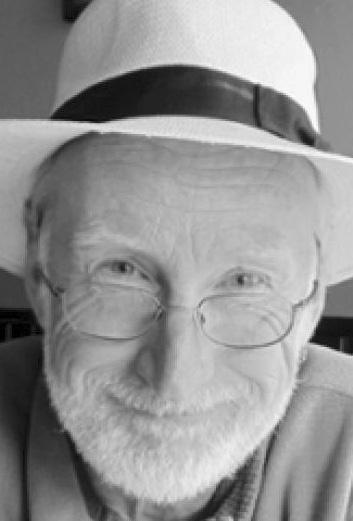
“Ironically,” Huising said, “while UC researchers have helped lead in documenting the severity of our climate predicament and all its consequences (by co-writing Intergovernmental Panel on Climate Change reports, National Climate Assessments and California’s fourth climate assessment and the indicators of climate change in California) and many, many
There is generally good news across UC campuses as staff works toward reducing fossil fuel use and improving sustainability, according to Wheeler. UC Berkeley has obtained $249 million directly from the legislature to partially assist its conversion.
UC
Santa Cruz Chancellor Cynthia K. Larive recently appointed a Decarbonization and Electrification Task Force. UC San Diego has a new electrification study beginning.
The UC Office of the President recently formed a Pathways Toward a Fossil-Free UC Task Force and is making $1 million to $1.5 million available per campus to catalyze electrification planning to eliminate the use of methane, according to Wheeler.
Huising was added to the Campus Advisory Committee on Sustainability in response to a petition in fall 2021 to the chancellor to decarbonize campus operations by 2030. By Jan. 6, the petition had 1,315 signatures.
Huising said UCD is doing better than other campuses, where there is a lot of inertia to meaningfully plan for decarbonization, particularly at the most polluting campuses (UCLA, UCSD). “It is important to keep in mind that task forces and talking points only will result in emission reductions if they are committed to and acted on.”
Special to The Enterprise
Plans are underway for the 12th annual UC Davis Biodiversity Museum Day, a “Day of Science.”
Scheduled Saturday, Feb. 18, it is billed as a “free, family friendly educational event for the community where visitors get to meet and talk with UC Davis scientists and see amazing objects and organisms from the world around us,” according to Biodiversity Museum Day chair Tabatha Yang, education and outreach coordinator for the Bohart Museum of Entomology.
Yang announced that 11 museums or collections on campus will showcase their work on Feb. 18:
n Anthropology Muse um, 328 Young Hall and grounds, noon to 4 p.m.
n Arboretum and Public Garden, Habitat Gardens in the Environmental GATEway, adjacent to the Arboretum Teaching Nursery on Garrod Drive, 9 a.m. to 1 p.m.
n Bohart Museum of Entomology, Room 1124 and main hall of the Academic Surge Building, 455 Crocker Lane, 9 a.m. to noon and 1 to 4 p.m.
n Botanical Conservatory, the greenhouses along Kleiber Hall Drive, 11 a.m. to 3 p.m.
This great horned owl at the California Raptor Center will be among the attractions at the 12th annual UC Davis Biodiversity Day on Saturday, Feb. 18, on the UCD campus.

n California Raptor Center, 340 Equine Lane, off Old Davis Road, 9 a.m. to 3 p.m.
n Center for Plant Diversity, Sciences Laboratory Building/Esau Science Hall, off Kleiber Hall Drive, 11 a.m. to 3 p.m.
n Nematode Collection, Sciences Laboratory Building/Esau Science Hall, off Kleiber Hall Drive, 9 am. to 3 p.m.
n Marine Invertebrate Collection, Sciences Laboratory Building/Esau Science Hall, noon to 3 p.m.
n Museum of Wildlife and Fish Biology, Rooms 1394, 1371/1275, and main hallway, east end of first floor, Academic Surge Building, 455 Crocker Lane, 10 a.m. to 2 p.m.
n Paleontology Collection, 1309 Earth and Physical Sciences Building, 434 LaRue Road, noon to 4 p.m.
n Phaff Yeast Culture Collection, Robert Mondavi Institute Brewery and Food Processing facility, 10 a.m. to 2 p.m.
The UC Davis Bee Haven and the Viticulture and Enology Collection will not be participating this year.
The UC Davis Biodiversity Museum Day is traditionally held on Presidents’ Day Weekend. During the COVID-19 pandemic, however, the 2022 event took place in the UC Davis Conference Center and drew some 1000 visitors. This year, it’s back home to the individual departments where scientists will be on hand to greet visitors and answer questions.
All participating museums and collections have active education and outreach programs, Yang said, but the collections are not always accessible to the public.
Metro
Special to The Enterprise
Vehicles are among the most costly expenses individuals have. According to data from Kelley Blue Book, the average price paid for a new vehicle in the United States in September 2022 was $48,094. Canadian car buyers face an equally expensive reality in their country, where the average MSRP for a new car is more than $45,000.
Since vehicles are such sizable investments, it behooves motorists to do as much as they can to keep their cars and trucks running smoothly. Vehicle owner’s manuals typically recommend maintenance intervals and should be drivers’ first resource for information regarding how to take care of their cars and trucks. But the following are some standard maintenance intervals drivers can keep in mind.
The 3,000-mile marker used to be the benchmark for changing oil, but modern vehicles can now go longer between oil changes. However, it’s still a good idea to check other fluid levels every 3,000 miles. Windshield washer fluid, coolant, brake fluid, transmission fluid, and power steering fluid should all be checked every 3,000 miles and topped off if levels are low.
It’s wise for drivers to perform some additional maintenance
checkups every 3,000 miles. Check tire pressure, inspect hoses (which should not be leaking or bulging) and clean the interior of the vehicle every 3,000 miles.

Many vehicle manufacturers now recommend oil changes every 5,000 miles. Tire rotations also can be part of service visits at this interval, and drivers can ask their mechanic to check their fuel filters and batteries every 5,000 miles as well. Many may already

do this as part of their comprehensive maintenance packages, but it’s still good to confirm if they do and request they do so if it’s not part of the plan.
Drivers also can request that cabin air filters are inspected at this point, though they can generally last a year before they need to be replaced.
Around the 5,000-mile mark, wiper blades also may begin to show signs of wear and tear, including streaking on the windshield or scratching noises when in use. Each of those signs indi-
cates the wipers need to be replaced. However, drivers should take note of these signs regardless of when they appear. Some may not make it 5,000 miles before they begin to wear down. In such instances, they should be replaced immediately regardless of how many miles it’s been since they were installed.
Some vehicles may only require oil changes every 10,000 miles. That’s not uncommon in
vehicles that use synthetic oil, though drivers are urged to consult their owner’s manuals.
Brake pads also may need to be replaced around this time, and one telltale sign of that is a squeaking noise whenever the brakes are applied.
Drivers can ask their mechanics to check the alignment of their vehicles around this interval as well. Though many vehicles won’t develop alignment issues, it’s best to check for such issues every 10,000 miles or whenever a vehicle feels as though it’s pulling in one specific direction.

Maintenance intervals are created to serve as a guideline for drivers. Any issues that arise should still be brought to the attention of a mechanic regardless of how many miles have been added to the odometer since the most recent trip to the garage.

Since vehicles are such sizable investments, it behooves motorists to do as much as they can to keep their cars and trucks running smoothly.kathy keatley Garvey/courte Sy photo
Soon after the current season at the Robert and Margrit Mondavi Center for the Performing Arts wraps up, Don Roth will take his final bow as its executive director. He announced this week he will retire Aug. 31 after a 17-season run. Now in its 20th anniversary season, the Mondavi Center enjoys an impeccable image and reputation, due in no small part to Roth’s vision and leadership. He arrived in 2006 with self-proclaimed eclectic taste, a commitment to welcoming more diverse artists and audiences, and a sincerely held desire to increase accessibility to the arts.
“Don’s passion for the performing arts has helped to elevate the Mondavi Center and UC Davis as a cultural hub in our region,” said Provost and Executive Vice Chancellor Mary Croughan. “He understands the role that performing arts plays in building a sense of community and connecting us with
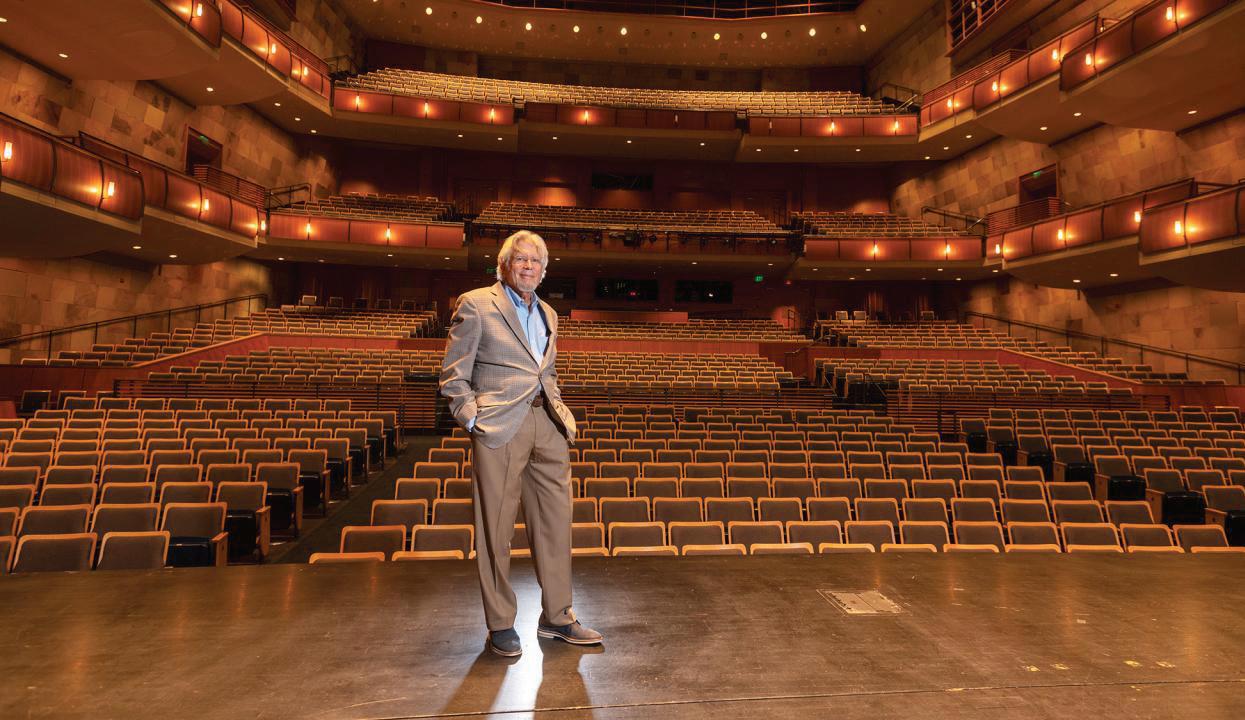
one another in deeply meaningful ways. What he has accomplished is nothing short of extraordinary, and he will be greatly missed.”
The university will launch a national search for his successor.
Year after year, under Roth’s leadership, the center has played a vital role in the university’s academic mission, while also attracting performers, who, in the past, rarely or never visited the area. The center also welcomed new, more diverse audiences. And it stayed financially afloat during the COVID-19 pandemic, creatively and successfully delivering virtual performances.
“I’ve had the privilege to be in an environment — both the Mondavi Center and our university — where my core values mesh with the mission and vision, and the ongoing work we get to do,” Roth said. “This role has reflected my deepest values and identity, and it
has been such an honor to be part of bringing the arts to our community.”
During Roth’s tenure, the Mondavi Center has welcomed a wide range of artists, including New Zealand opera singer Kiri Te Kanawa, the Alvin Ailey American Dance Theatre, Bonnie Raitt, Yo-Yo Ma, the late John Prine and Ballet Preljocaj.
Roth has favored events that broke the mold, like Stewart Goodyear’s “Sonata-thon,” during which he played all 32 Beethoven Sonatas in one day; and the “Egghead Music Walk” in which St. Louis Symphony musicians strolled to all of the campus’s Robert Arneson Egghead sculptures, playing specially commissioned works by UC Davis composers.
To broaden its collaboration with faculty, the Mondavi Center launched SHAPE — Science, Humanities and Arts: Process and Engagement —
thanks to a $600,000 grant from the Andrew W. Mellon Foundation in 2019. The program, which Roth designed in partnership with the Office of Undergraduate Education and the UC Davis Humanities Institute, led to the creation of 11 undergraduate seminars taught by arts, science, engineering and humanities faculty.
“I am very proud of this project and the close rela-
tionship it has created between the Mondavi Center and the artists we bring to campus, and the education work of our great UC Davis faculty,” Roth said.
“By hosting transdisciplinary teams, we demonstrate the ways in which the arts and humanities connect to the sciences and mathematics. The arts remain powerful agents in creating meaning for individuals and society.”
For now, Roth is looking forward to the great lineup of artists who will close out the Mondavi Center’s 20th anniversary season. And he is hard at work with the Mondavi Center programming team putting the finishing touches on the 2023-24 season, and on enhancing the connections between members of the community and the performing arts.
— UC Davis News
The Dixon May Fair was recently awarded several honors in the Western Fair Association’s annual industry Achievement Awards program. WFA represents Fairs and associated industry providers from the Western United States and Canada. The fair competed with other medium-sized fairs with attendance of 50,000150,000.
Dixon May Fair received the first place award for its pocket schedule brochure, designed by Suzanne Wright; and second place for its annual fair time logo, designed by artist Steve Dana. In the Give It Your Best Shot competition the fair received a first place for a photo of young Ethan Cook enjoying a fresh soft pretzel and for a skyward shot of a carnival ride. Second-place awards were for Exhibits, Competitive or Education, Entertainment and Grounds acts, and People at the Fair. The photos were taken by marketing director Karen Spencer.
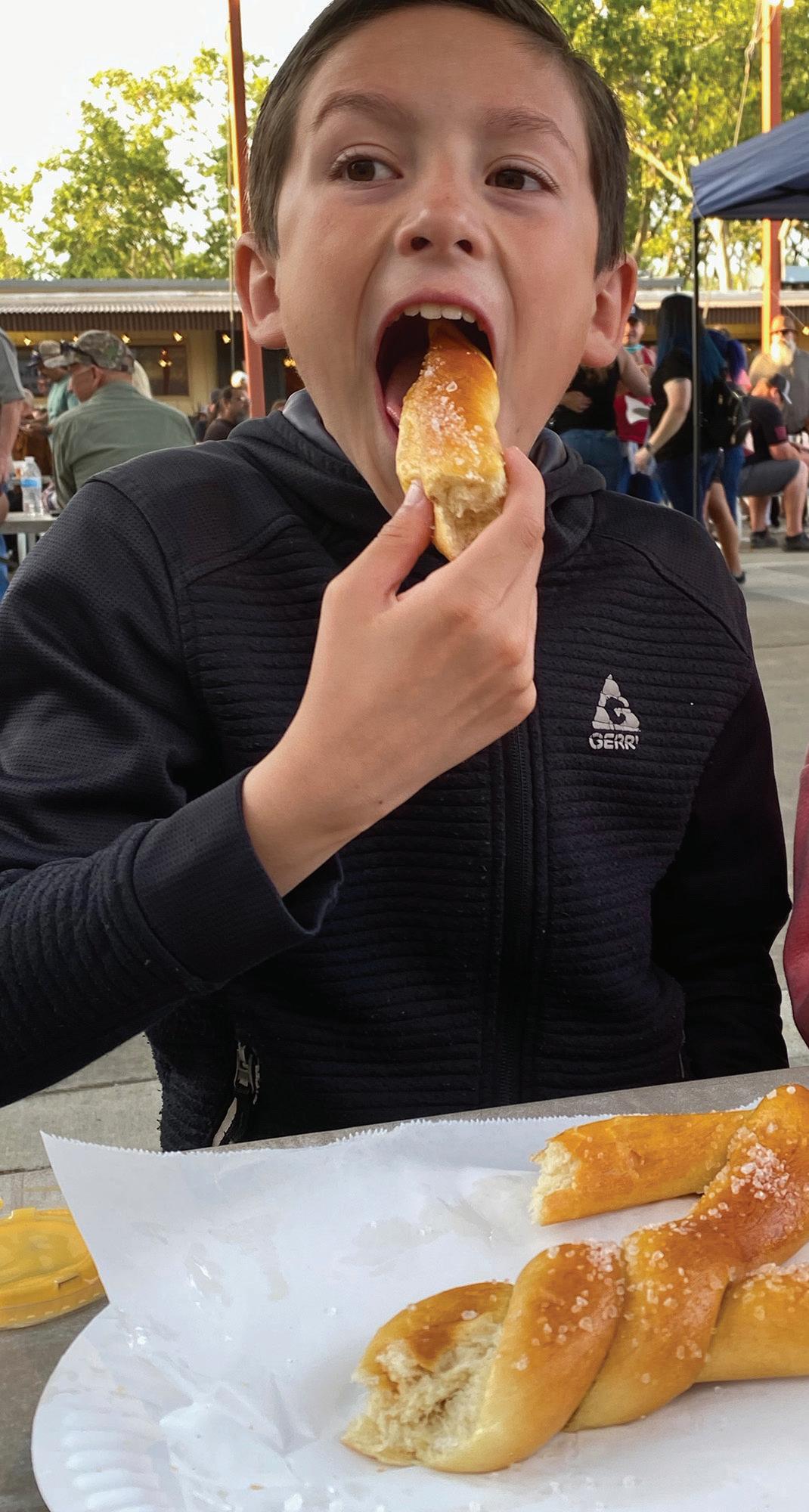
The goal of the Achievement Awards Program is to recognize excellence and share successful ideas and programs amongst
There’s plenty of live music to choose from during the next week-and-ahalf in Davis ...
For those planning ahead:
members. Achievement Award winners serve as inspiration to the industry, demonstrating innovation worthy of replication.
More than 50 Fairs participated in the program.
The 2023 Dixon May
Fair will be from May 11 to 14. The theme for 2023 is Spring Has Sprung! as the fair celebrates its 146th edition and the importance agriculture to the local community.
■ The well-known St. Olaf Choir, a century-old 75-voice choral group from venerable Lutheran St. Olaf College in rural Minnesota, sings at the Mondavi Center at 7 p.m. Monday, Feb. 6. $50-$25 general, MondaviArts.org and at the door.
■ Pink Martini is a popular, groovy retro musical collective from Portland, Ore., and they return to the Mondavi Center’s
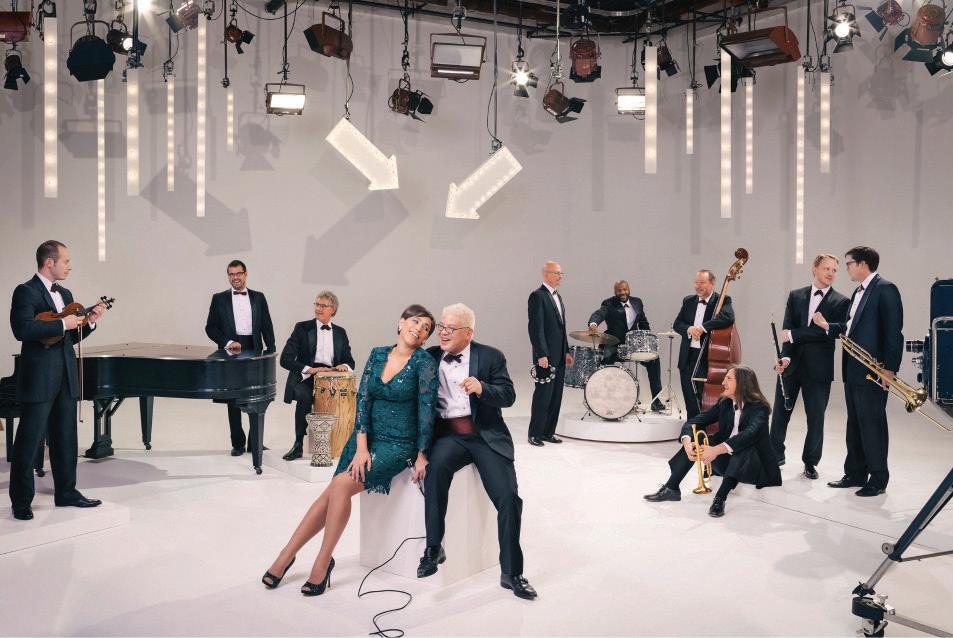
Jackon Hall on Tuesday, Feb. 7, at 7:30 p.m. They favor a tasty blend of early 1960s-style smooth pop and gentle jazz, including an assortment of international crossover hits sung in the original Spanish, French, etc.
A Pink Martini concert is a bubbly party (exuberant, but never spinning out of control) at which everybody has an enjoyable time.
Much of the music is optimistic and sunny, and for this tour, ebullient bandleader Thomas Lauderdale and his well-chosen crew will be backing Pink Martini’s original lead vocalist, China Forbes.
Ticket sales have been brisk, but there are still
some seats available, mostly in the upper balcony. $85-$35 general, with discounts for students, MondaviArts.org.
■ Singer/songwriter
Becca Stevens performs at the Mondavi Center on Thursday, Feb. 9, at 7:30 p.m. Stevens was born in North Carolina; her father composed choral sacred choral music, and her mother toured in musicals. Becca Stevens went on to study classical guitar, and settled down in New York (specifically Brooklyn), earning degrees in vocal jazz and music composition.
As the publication Time

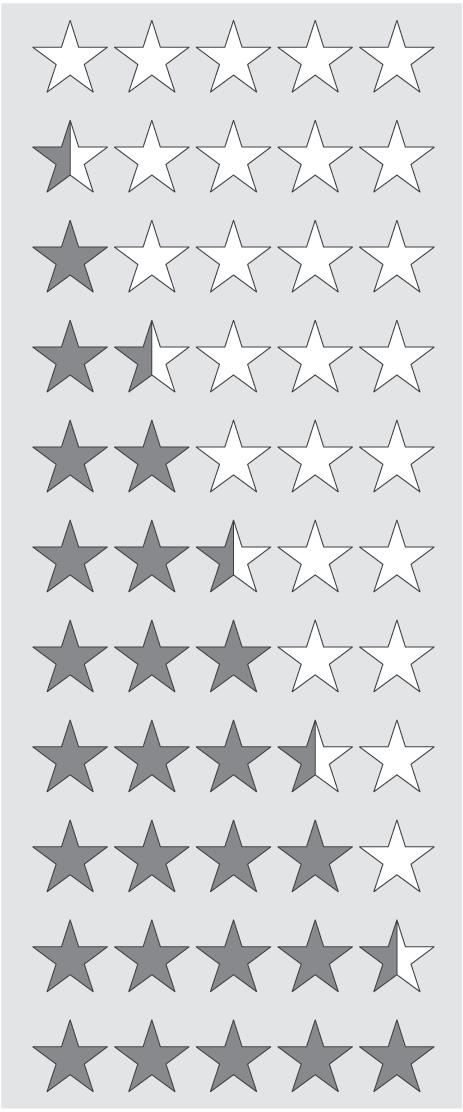
Derrick Bang Enterprise film critic
This is a nice surprise.
Although director Kyle Marvin’s cheerful romp is the silly little comedy one would expect from its premise and publicity, it’s also a delightful showcase for its Hollywood veterans.
Scripters Emily Halpern and Sarah Haskins shrewdly play to their stars’ strengths, and you’ll likely be surprised by the degree to which you become invested in this story’s outcome.
Add the fact that these events are set against the historic Super Bowl LI, and the result is a “silly comedy” that builds to an exhilarating climax.
The setting is Massachusetts in 2017, where longtime friends Lou (Lily Tomlin), Trish (Jane Fonda), Maura (Rita Moreno) and Betty (Sally Field) gather in front of the TV every game day to don team jerseys and watch their beloved Patriots … and, most particularly, quarterback Tom Brady.
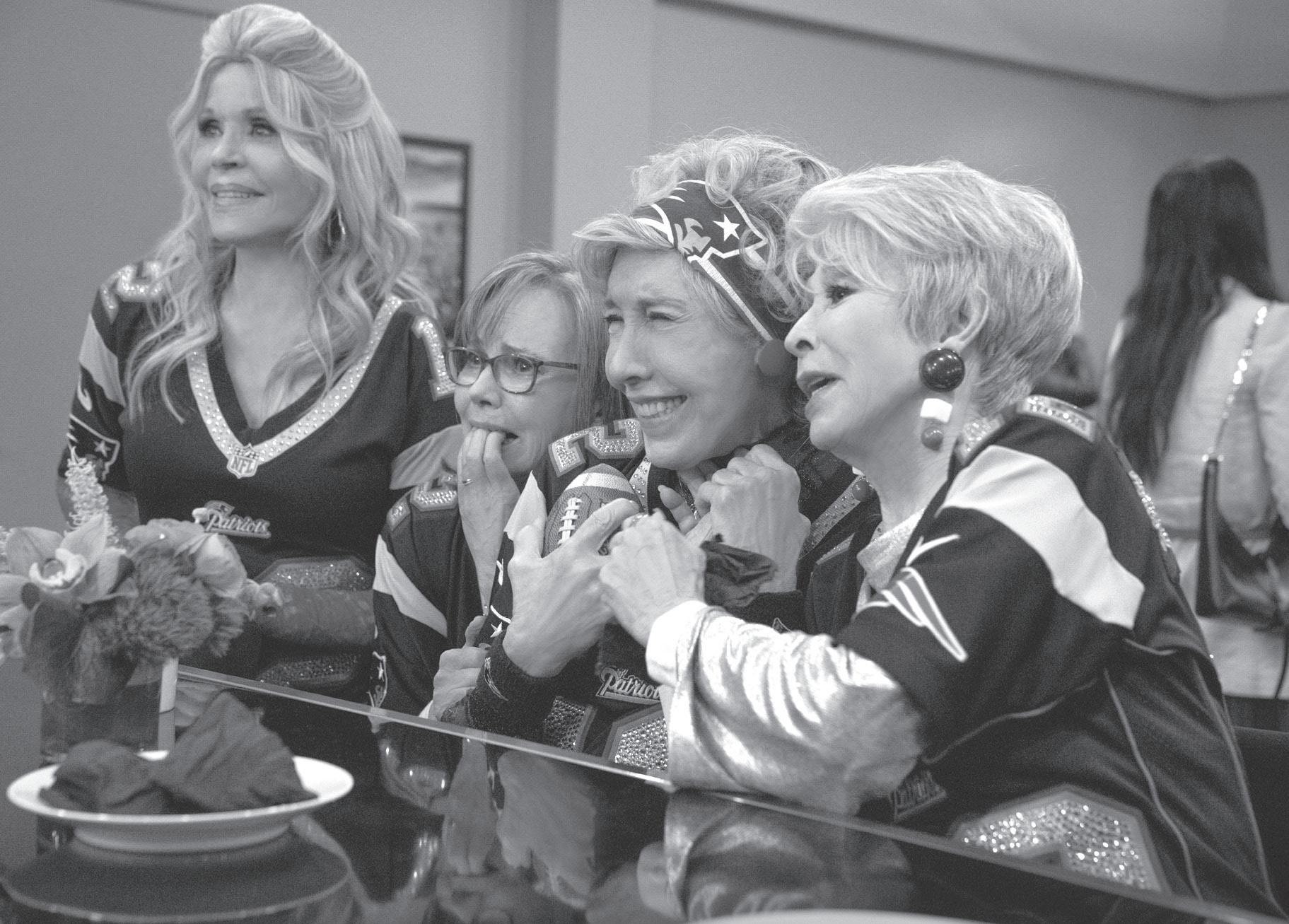
This routine has continued for years, ever since getting involved with football helped Lou defeat a bout with cancer. In a nod to sports voodoo — as with baseball players who never change their socks once a streak is established — these four gals diligently mimic their actions prior to a long-ago upset victory: where they were sitting or standing, and what they were saying and doing, down to spilling a bowl of potato chips at a precise moment.
Lou is the gutsy ringleader, who insists on the replication of all these details. Trish is glam and feisty; Maura is adventurous and tireless. Betty is
Starring: Lily Tomlin, Jane Fonda, Rita Moreno, Sally Field, Tom Brady, Harry Hamlin, Sara Gilbert, Bob Balaban, Glynn Turman, Billy Porter, Alex Moffat, Rob Corddrey, Guy Fieri
Available via: Movie theaters
smart and down-to-earth: the gang’s pragmatic conscience.
Each woman comes with a bit of emotional baggage. Maura hasn’t recovered from the loss of her husband, and — rather than live alone in their home — she has sorta-kinda moved into an assisted living facility, in order to be surrounded by other people.
Trish falls in love too quickly, and repeatedly gets her heart broken; Lou constantly worries that her cancer might recur. The precise and practical Betty, although a wiz with math and stats, can’t figure out what to do with her hapless husband (Bob Balaban, as Mark), whose absent-mindedness has become a trial.
Once the game concludes, on this particular afternoon, Lou impulsively decides that they all should attend the upcoming Super Bowl, at Houston’s NRG Stadium.
But that’s an impossible proposition. They all live (albeit comfortably) on fixed incomes; obtaining tickets is prohibitively expensive, to say nothing of travel and lodging.
Then, suddenly, a ray of hope: Two local radio station co-hosts announces a contest, the winner of which will receive four Super Bowl tickets. But it
won’t be a random draw. Each participant is asked to write an essay, explaining why she or he should win; the DJs will award the tickets to the entrant whose story touches them the most.
Even this early, Halpern and Haskins’ script offers droll touches, as Lou and her friends embrace this essay challenge in varying ways. Maura’s ploy is the funniest, as she transforms the residents of the assisted living facility into an essaywriting squadron.
Once the gals arrive in Houston, a few of the subsequent events are wholly predictable. The tickets will get lost; Trish will meet a nice guy who probably won’t break her heart; all manner of other calamities will threaten to screw up their plans; and several of the gals will unintentionally eat cannabis-laden gummies.
(The latter gag is almost as old as this film’s stars but hey; it still works.)
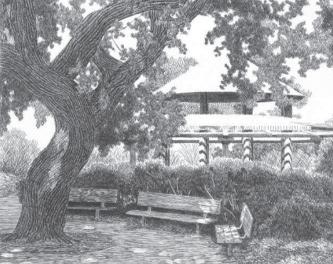

Out New York put it, “Stevens fashions a sound all her own with airy, brook-clear songs equally touched by jazz sophistication and homespun folk charm,” with a bit of indie pop sensibility in the mix as well.
Seats available, $65-$25 general, discounts for students, MondaviArts.org.
■ Clarinetist Patricia Shands will be featured by the Chamber Music Society of Sacramento on Saturday, Feb. 11 at 7:30 p.m. in the Brunelle Performance Hall at Davis High School, 315 West 14th St. Shands joined the music faculty at the University of the Pacific in 1995, and her chamber music performances have been a highlight of this chamber music series many times. She’ll be featured in the W. A. Mozart Clarinet Quintet in A Major, as well as “Contrasts” for piano, violin and
clarinet by Bela Bartok. Also on the program will be chamber works by Czech composers Josef Suk and Leos Janacek.
Tickets are $30 general, $25 seniors (age 60+), $12 students with ID/children, CMSSacto.org.
■ Longtime NPR legal correspondent Nina Totenberg will discuss covering the Supreme Court, as well as her longtime friendship with the late Supreme Court Justice Ruth Bader Ginsberg, at the Monavi Center on Friday, Feb. 3, 7:30 p.m. Limited seats still available in Jackson Hall’s Upper Tier.
■ The annual Barbara K. Jackson Rising Stars of Opera concert — featuring singers from the San Francisco Opera Center, backed by the UC Davis Symphony Orchestra under
conductor Christian Baldini, will be on Sunday, Feb. 5 at 2 p.m. Tickets are free — all seats had been claimed as of several weeks ago, but don’t despair ... there is usually a no-show factor, and typically a number of seats are released by the box office shortly before the performance.
■ On Monday, Feb. 6, at 7 p.m. at Davis Community Church (412 C St.), the highly-regarded American Bach Soloists (based in San Francisco) will present a music by J.S. Bach, Antonio Vivaldi, and G. P. Telemann), on historically appropriate instruments. Featured will be Canadian soprano Hélène Brunet, based in Montreal. This will be one of the few opportunities to hear a professional Baroque chamber orchestra in this region this year, seating in Davis Community Church is limited. $101-$39, AmericanBach.org.
The film’s “fantasy gimmick” belongs to Lou, who frequently imagines that Brady is talking directly to her: through a video monitor, from a life-size cardboard standee. (Brady is quite accomplished at playing himself.)
Many of the subsequent set-pieces are hilarious, most notably Betty’s impulsive decision to enter a hotwing-eating contest hosted by Guy Fieri. Maura’s unexpected participation at a high-stakes poker table reveals her secret weapon: She’s a very shrewd gambler, and incredibly lucky.
The quartet’s attempt to pose as backup dancers for the halftime show also is a hoot, with Billy Porter adding considerable pizzazz as a sympathetic choreographer who helps with this mad scheme.
Indeed, the four stars are surrounded by a wealth of engaging supporting players. Alex Moffat and Rob Corddrey are hilarious as the radio co-hosts, Nat and
Pat, whose on-air antics get progressively wilder as the story proceeds. Harry Hamlin is suaveness personified as a long-retired football player who catches Trish’s eye, and Sara Gilbert is solid as Lou’s worried daughter.
Glynn Turman makes the most of his performance as Mickey, a goodhearted fellow who’d very much like to become Maura’s “gentleman friend.”
Halpern and Haskins uncork a couple of plot twists — one of them genuinely unexpected — which enhance the third act.
Not everything works; Betty’s attempt to give romantic advice to a hunky young guy falls flatter than a deflated football, and the “lost tickets” crisis resolves rather clumsily. But that’s small stuff, considering the good will Marvin’s gentle 98-minute film builds along the way.
Paramount’s publicity team has gone out of its way to proclaim that this
film is “inspired” by actual events, but that’s a stretch.
Yes, an “Over 80 for Brady” fan club was established by five women who, after becoming widows, bonded and became rabid Patriots fans. But they never made it to a Super Bowl, never met Brady, and — needless to say — never indulged in any of this film’s over-thetop antics.
That’s OK. When we’re blessed with seasoned scene-stealers like Tomlin, Fonda, Moreno and Field, real-world accuracy scarcely matters; it’s best to simply sit back and enjoy what they do so well.
— Be sure to join Derrick when he hosts 1949’s “I Was a Male War Bride” at 7:01 Sunday, Feb. 19, as the first in a series of classic military comedies, presented at the Davis Odd Fellows Hall, 415 Second St. Read more of his film criticism at http://derrickbang.blogspot.com. Comment on this review at www.davisenterprise.com.

Special to The Enterprise Classic Hollywood cinema returns to the Odd Fellows Hall in February in the 14th series of the Davis Classic Film Festival. The classic films to be shown in this series will be the 40th, 41st and 42nd films screened during the Odd Fellows Classic Film Festival.
In the Spring of 2014 the Davis Odd Fellows offered the first series of the Classic Film Festival, offering three classic films for public viewing in the Upper Hall. Except for a pandemic hiatus, we have been showing these classic films for the past nine years. Starting on Feb. 19, the 14th series of classic cinema begins. The films are presented on the big screen in the Upper Hall. Odd Fellows, pledges, friends, family and the general public are welcome, and there is no admission charge (although donations in support of classic films
are accepted at the door).
The Davis Odd Fellows Lodge is located in Downtown Davis at 415 Second St. Parking on Sunday is free and plentiful. Doors open at 6:29 p.m. and the program begins at 7:01 p.m.
“A special feature of the Classic Film Festival, since the inception, has been the Odd Fellows’ honored guest, Derrick Bang, the talented and respected film reviewer for The Davis Enterprise,” said Dave Rosenberg, Chair of the Classic Film Committee.
“No one in Northern California knows more about classic cinema, and Derrick will be at each showing giving the backstory of the film, the actors, and the director. These are details about the film and the actors that are generally unknown to the public. It’s entertaining and fascinating stuff from the Golden Age of Hollywood.”
In each series, the Classic Film Festival Committee, working with ang, picks the genre for the three films. Past series have featured an eclectic number of genre including romantic comedy, science fiction, courtroom dramas, classic spy thrillers, and more. “The genre for the upcoming 13th series is called ‘Military Comedies’,” Rosenberg said. Here are Bang’s comments on the first film: Feb. 19: “I Was a Male War Bride (1949)” — One of director Howard Hawks’ best screwball comedies. After marrying an American lieutenant (Ann Sheridan) with whom he has been assigned to work in post-war Germany, a French captain (Cary Grant) attempts to work the system in order to accompany her back to the States, under the terms of the War Bride Act. An absolutely hilarious premise, well executed.
Forty-eight striking janitors were fired at Twitter recently, representing the latest backlash from massive corporations hellbent on undermining momentum for unionizing workers.
Similar actions from Amazon and Starbucks have made headlines. But it’s not just billionaire bosses and Fortune 500 companies that intimidate and inflict economic pain on workers who speak up against abuse. New research shows how employer retaliation is too often the rule, rather than the exception.
Elected officials have made deliberate policy choices that leave workers at risk when they stand up for fundamental labor rights and protections from wage theft, unsafe workplaces or sexual harassment.
Even the toughest laws on paper don’t mean much if workers don’t feel safe coming forward to report rule-breaking, or unfunded agencies don’t have the resources to investigate.
To build a strong economy and fight inequality, California’s new class of legislators need to change the imbalance of power that leaves workers vulnerable to retaliation.
After surveying 1,000 working adults in California and conducting focus groups in six different languages, a new report from the National Employment Law Project illustrates the consequences of virtually unchecked employer power. Workers said they were being bullied into silence.
Nearly 2 in 5 workers have experienced workplace violations, yet only 10% reported them to a government agency. Of those who took the risk of coming forward, more than half experienced some form of retaliation.
Workers said that if they were not worried about running out of money for rent and other basic needs, they would be far more likely to report workplace violations. Concerns about being fired or disciplined prevented more than 40% of workers from joining their colleagues to push for job improvements. An even greater share of Black and Latino workers — 55% and 46%, respectively — said the risks for speaking out were too high.
Deliberate policy choices created an economy where workers are too vulnerable, which means deliberate policy choices can fix the power imbalance. State leaders must prioritize actions this year to protect workers from retaliation.
The creation of a retaliation fund would give workers the peace of mind — and the immediate economic support — they need to feel confident exercising their rights. A worker who reports a workplace violation to a state agency would be able to access quick, meaningful financial assistance if their employer retaliated against them.
California needs to fund education to help workers understand their rights, and give workers a meaningful chance to have their cases resolved once they’ve risked coming forward. While California’s antiretaliation laws are tough on paper, employers know there is little consequence for breaking them because the agencies charged with enforcing workers’ rights are severely underfunded.
The NELP report also makes it clear that it’s time to reconsider California’s “at will” employment model in favor of a “just cause” policy that protects workers from arbitrary and unfair firings. Employers should be required to show that there is a justifiable reason before firing a worker.
These policies are overwhelmingly popular. Ninety-two percent of working Californians supported the creation of a retaliation hardship fund, the survey found, and 2 in 3 said having access to such a fund would make them more likely to report a labor violation to a government agency. Working Californians f all political parties — 81% — were in support of a law protecting workers from unfair and arbitrary firings.
— Alexandra Suh is co-chair of the California Coalition for Worker Power. She wrote this for CalMatters, a public interest journalism venture committed to explaining how California’s Capitol works and why it matters.
This month, I’m inviting all members of the Davis community to stand strong and take action in the face of hate.
Through Healthy Davis
Together, we’ve already demonstrated how much we can achieve and serve as models for other communities around the nation when we join together. One thing that became immediately apparent during the pandemic was that our results to prevent the spread of the virus were strong because of our collective, sustained and collaborative effort.
It’s time to work together again to target the virus of hate. UC Davis, the city of Davis and Yolo County have formed an initiative called Hate-Free Together to take action against the rise of local hate incidents. We invite you to join us in condemning hate, creating safety and cultivating change.
Unfortunately, just in the last year alone, we’ve seen a rise in antisemitism in our community. Nationally, the Jewish Anti-Defamation League reports that documented reports of harassment, vandalism and violence directed against Jewish people are at record levels.
Hate crimes are also on the rise nationally, according to the FBI, which include racism targeting Asian Americans, Pacific Islanders and Black Americans. We’ve seen violence targeting the LGBTQ+ community, and hate directed toward Muslims, immigrants and people with disabilities.
These incidents occur in our communities and impact
I am honored to have the trust of friends, colleagues, community members and public officials who have encouraged me to run for Davis City Council District 3 in the May 2nd election. Nevertheless, I have decided that I will not be a candidate at this time.
As always, I remain dedicated to serving the residents of Davis and Yolo County. For now, I will focus my energies on advancing social equity and a sustainable environment and economy as Chair of the city of Davis Human Relations Commission and Chair of the Yolo County Climate Action Commission.
We all have a role to play in ensuring the wellbeing of our residents through access to education, healthcare, and nutrition, and by creating opportunities for upward mobility and a meaningful life. It is more important than ever that the voices of historically disadvantaged and underserved communities be heard as we forge policies that affect the future of our community as a whole in these challenging times. I am proud to amplify those voices in the work that I do.
With my best wishes to all,
N.J. Mvondo DavisSunday, Jan. 22, is the second anniversary of the entry into force of the Treaty on the Prohibition of Nuclear Weapons (TPNW). In 2017, the International
President
our neighbors, colleagues and friends. They cause fear and trauma. But we have the power to try and change these negative outcomes. This is why HateFree Together is needed now more than ever.
Our goal with the program is to make sure that every member of the community has an opportunity to contribute or feel supported in meaningful ways. The program encompasses individuals, such as students of all ages, seniors and families, along with local public agencies and businesses.
Hate-Free Together comprises three key actions. We will condemn hate and all forms of bigotry, refusing to stand silent in the face of hateful words and actions. We will work to create safety among our diverse community. And, we will cultivate change so we can break the cycle of hate.
Campaign to Abolish Nuclear Weapons received the Nobel Peace Prize for its work on this treaty.
The Davis City Council passed a resolution supporting the treaty on May 19, 2020, stating in part that the treaty would “provide the impetus and obligation for the complete elimination of nuclear weapons and the framework to achieve it.” California supported the TPNW with the enactment of AJR 33 in 2018. There are currently 92 signatories and 68 states parties to the treaty; none of them possess nuclear weapons. Today, ICAN is urging all of us to celebrate and support this treaty’s entry into force.
As President Biden told the U.N. last year: “A nuclear war cannot be won and must never be fought.” Yet he continues to oppose the TPNW. Millions of Americans must let President Biden know that he must support the TPNW in order to convince him to take steps to do so and actually prevent the horrific destruction that a nuclear war would create. Please support the treaty’s entry into force by writing President Biden and encouraging him to lead a movement of nucleararmed states to disarm and adopt the treaty. (https://www.whitehouse.gov/ contact).
Russian President Putin has redefined the “deterrence” justification for nuclear weapons by stating he would use those weapons if we tried to “deter” his invasion of Ukraine. This dangerous move, I hope, inspires more of us to support the TPNW so that any use of nuclear weapons is no longer a possibility. For more information go to icanw.org.
Judy Reynolds DavisThe Hon. Joe Biden, The White House, Washington, D.C., 20500; 202-456-1111 (comments), 202-456-1414 (switchboard); email: http://www.whitehouse.gov/contact
U.S. Senate
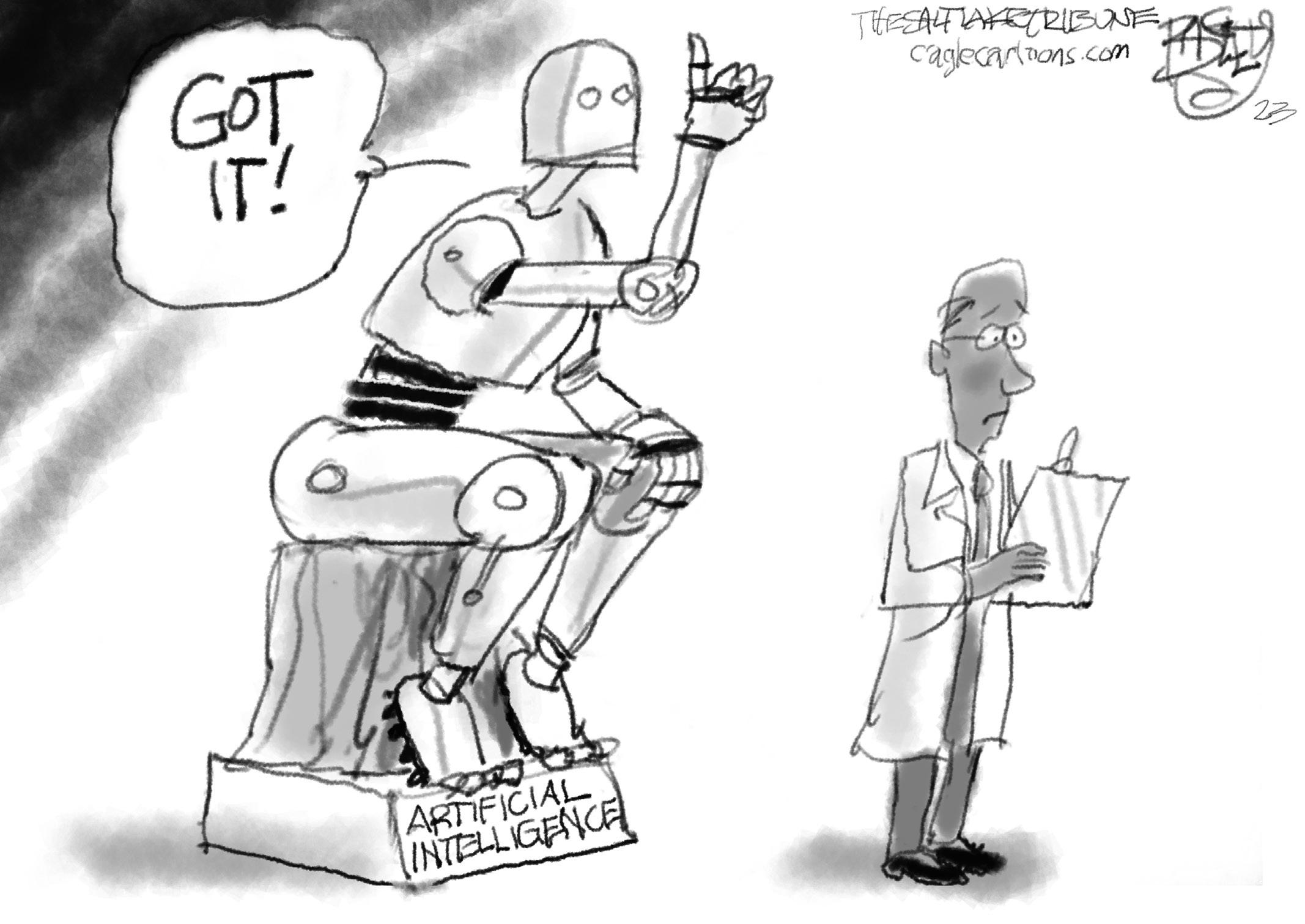
Sen. Dianne Feinstein, 331 Hart Senate Office Building, Washington, D.C., 20510; 202-224-3841; email: https://www. feinstein.senate.gov/public/index.cfm/ e-mail-me
Sen. Alex Padilla, 112 Hart Senate Office
Building, Washington, D.C., 20510; 202224-3553; email: https://www.padilla. senate.gov/contact/contact-form/
House of Representatives
Rep. Mike Thompson, 268 Cannon Office Building, Washington, D.C., 20515; 202225-3311. District office: 622 Main Street, Suite 106, Woodland, CA 95695; 530-753-5301; email: https:// https:// mikethompsonforms.house.gov/contact/
Governor Gov. Gavin Newsom, State Capitol, Suite 1173, Sacramento, CA 95814; 916-4452841; email: https://govapps.gov.ca.gov/ gov40mail/
In the coming months, you’ll hear much more about how you can get involved. Our initial plans include a series of community workshops, a website with more information and a range of resources and other action plans.
In the meantime, you can stay informed about the program by visiting https://bit. ly/HateFreeTogetherComment. On that web page, we encourage you to leave comments and suggestions to help us further develop plans.
I’m often asked how I can maintain hope in these trying times. It’s because I’m an optimist, and I truly believe in the power of unity to make a difference. I know this community believes in that too. Let’s make positive change together.
— Gary May is the chancellor of UC Davis; his column is published monthly.

George Rooks in a letter (Enterprise, Jan. 22) argues that the new government of Israel stands for democratic values. He devotes the first half of the letter to describing the undemocratic behaviors of Hamas and the Palestinian Authority.
Near the end of the letter, he lists the wonderful things that the Netanyahu government is doing to support democracy.
Strangely to my mind, he includes on the list “advance[ment of] the rights of Israelis living in Area C of Judea and Samaria.” Area C is the designation given in the Oslo Accords to what many refer to as the Occupied West Bank. It covers 60% of the West Bank and is home to an estimated 180,000-300,000 Palestinians and to a settler population of at least 325,500 living in 125 settlements and approximately 100 outposts. (https:// www.btselem.org/topic/area_c) Those outposts and settlements occupy land stolen from Palestinian Arabs and have secured water in this very dry land in violation of water law, hence Amnesty International’s phrase “the occupation of water.”
This theft of land and water has been and continues to be supported — at times with violence — by the Israeli military. Palestinians can obtain water from some of the settlements but must request it and jump through procedural hoops. How can anyone celebrate this as advancing democracy?
Stu Pettygrove Davis


 By Jerry Scott and Jim Borgman
By Jerry Scott and Jim Borgman


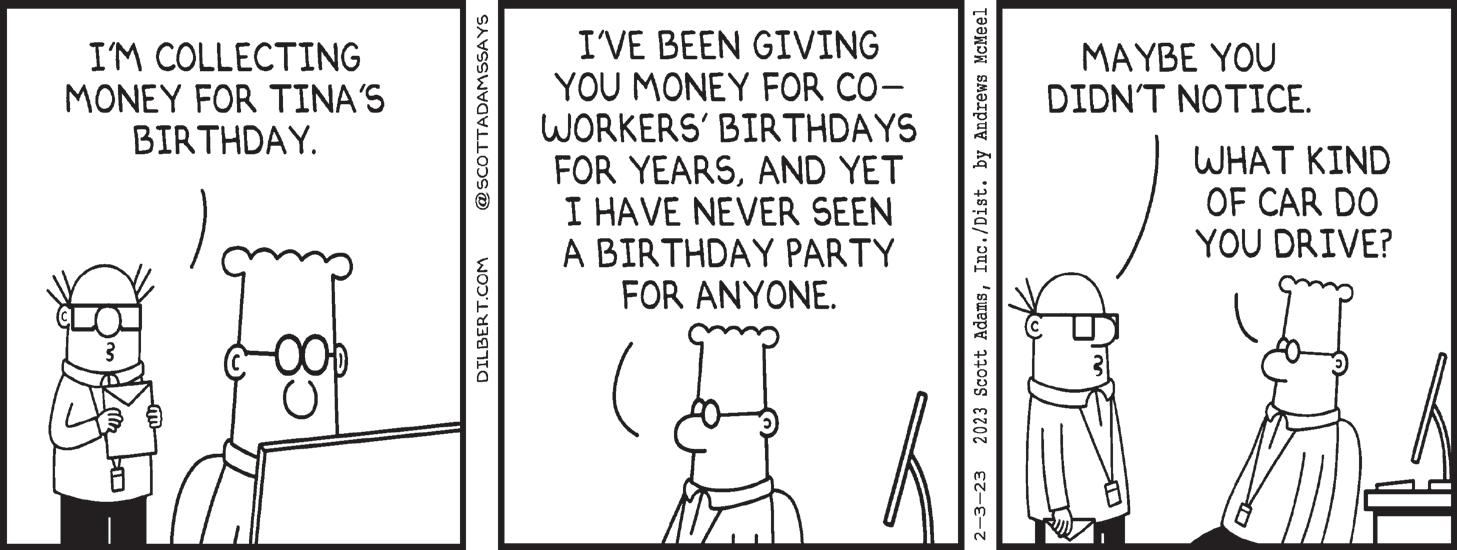



Enterprise staff

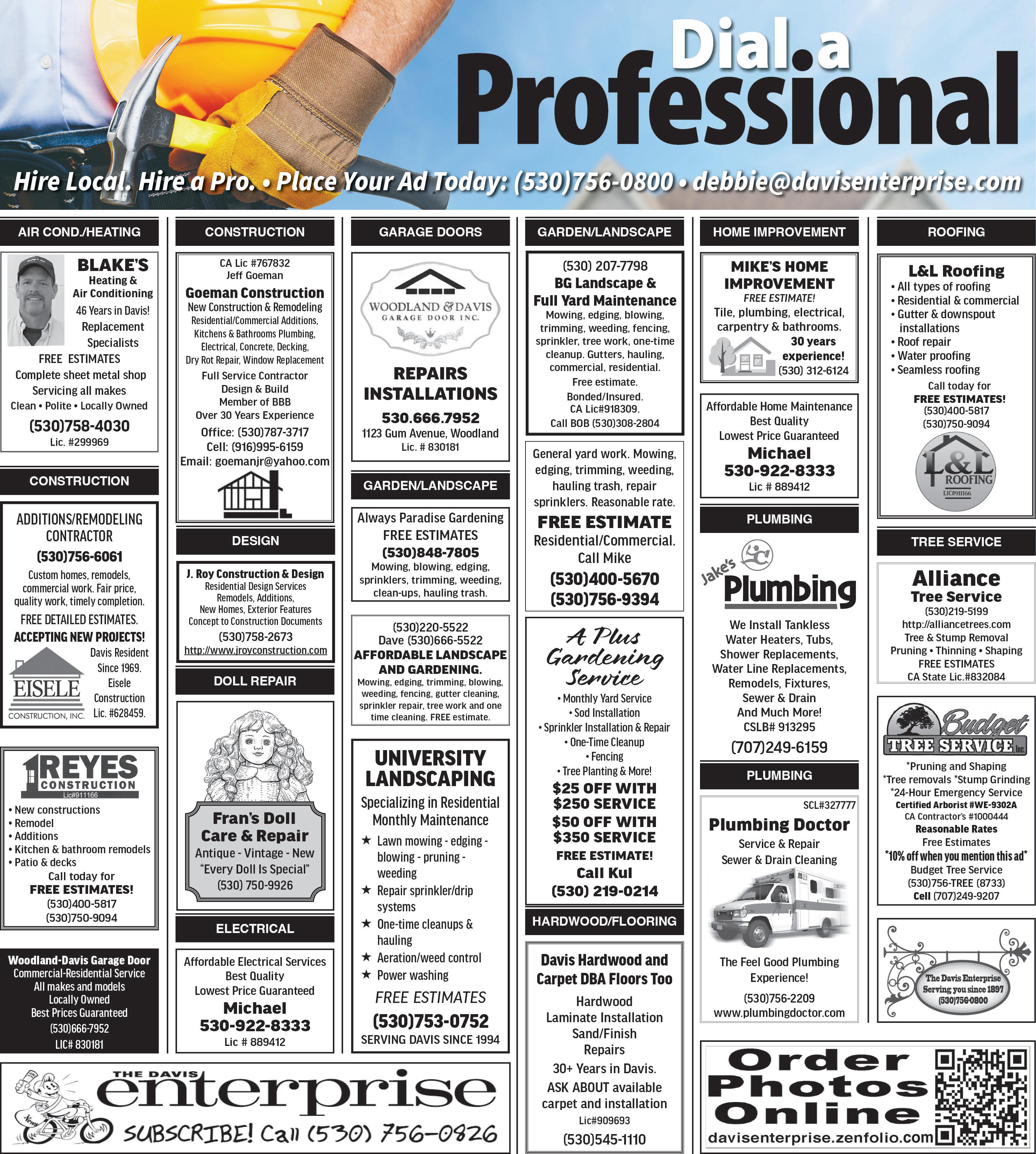
UC Davis football inked five prospective studentathletes to National Letters of Intent on National Signing Day, head coach Dan Hawkins announced on Wednesday.
Including the early signing period, the Aggies welcome 17 signees to the class.
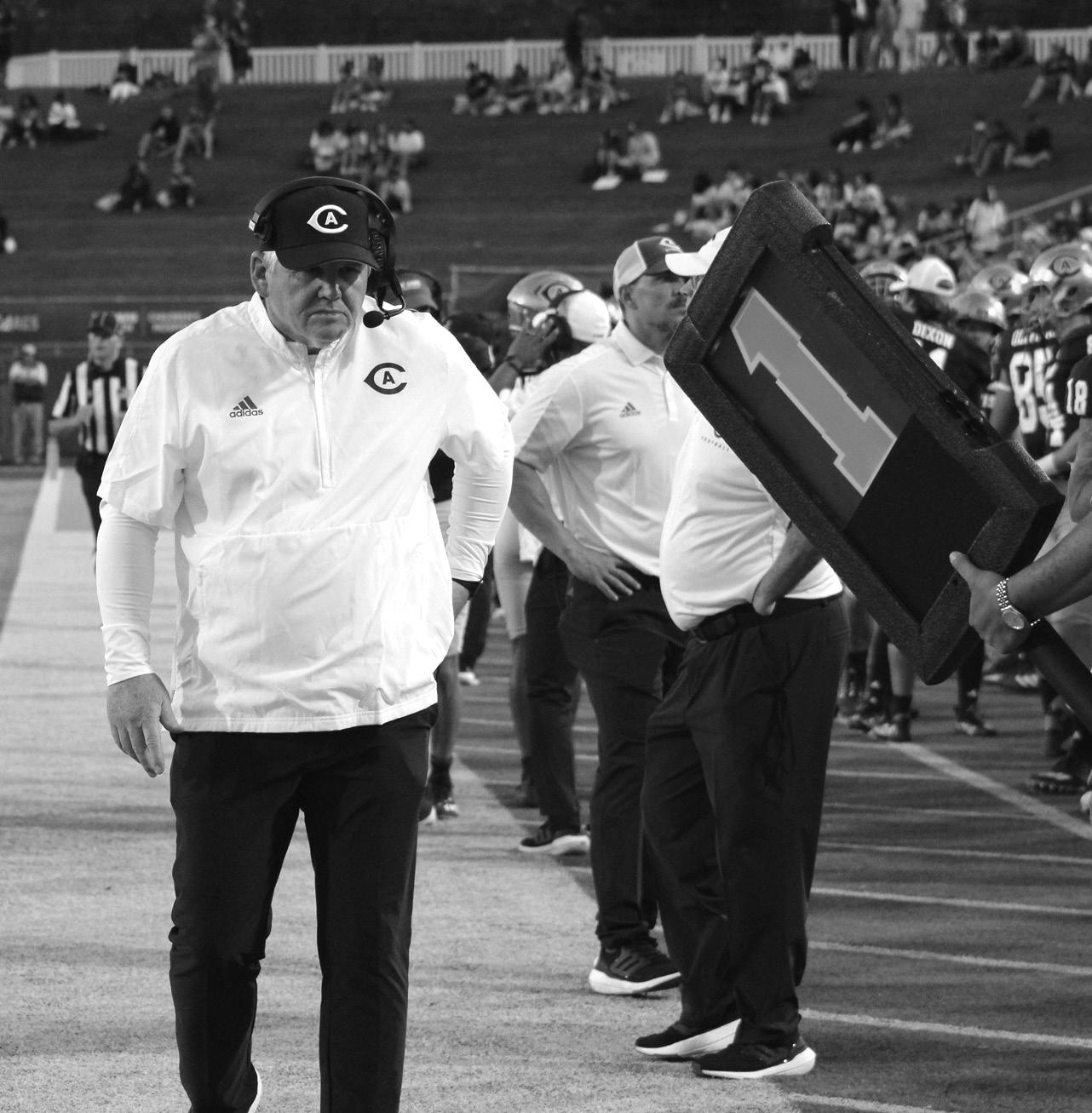
Alphabetically, the February NLI class is comprised of wide receiver/defensive back Malachi Bean-Seay, outside linebacker Grant Garretson, wide receiver/defensive back Ja’san Morton, wide receiver/defensive back Jeremiah Ruffin and tight end Ian Simpson.
All five hail from California with two coming to UCD as junior college transfers.
The Davis High football program will host its annual Youth Super Bowl Sunday football skills clinic
The clinic will be on Sunday, Feb. 12 — hours before the start of Super Bowl LVII — at Ron and Mary Brown Stadium from 10 a.m. until noon.
The camp is open for youth in third to eighth grades. For more information, contact Paul Hasson at phasson@djusd.
From Page B6
half. The Huskies outscored the Blue Devils 28-15, this quarter and took control of the offensive glass. Seized the second-chance points and started a pattern that would last the rest of the game.
“They’re an athletic team and sometimes we have a little trouble with that, especially with the offensive rebounding.

They got a lot of offensive rebounds,” said Gonzalez.
Sheldon dominated the glass from the second quarter onward. When third quarter started, Davis quickly cut Sheldon’s lead to 47-41 and back down to six. Sheldon had a single-digit lead,
and anything can happen with a couple of three’s. But Davis wouldn’t score its second basket until halfway into the third.
The Huskies put together a massive 12-0 scoring run against the Blue Devils during that four-minute stretch to make it 59-41. Before the aforementioned second basket by Davis. Sheldon’s run was spearheaded by Woodard’s ability to get offensive boards and convert afterwards. Woodard was responsible for six of the 12 points during that stretch.
After that Sheldon did not look back.
The Huskies’ lead quickly grew to 20 off some Davis turnovers to make it 69-49. By the end
it was 79-55.
The final quarter of the game continued with Sheldon maintaining a 20-point lead throughout, en route to the win.
“I liked our offensive ball movement, we had good looks… we just got a little cold with our shooting,” said Gonzalez.
Despite only converting 11-two-point baskets, the Blue Devils hit 16 3-pointers. Which on any other night would be enough to beat a team. Unfortunately the lack of field goals and being out rebounded couldn’t muster the win.
Jaden Woodard led the game and Sheldon with 27 points on the night. He was helped by junior Amari Davis who
contributed 15-points to their victory.
Crawford had 23 points and Matt Cossu 20.
With playoffs on the cusp and the league sending only four teams, the Blue Devils need to win at least two of their last three league games of the season to make it in.
“We’re on that edge, we gotta win at least two more games and who knows after that,”said Gonzalez.
Davis plays at Franklin today at 7 p.m.
The Blue Devils continue to play on the road at Pleasant Grove on Wednesday, Feb. 8.
— Gabriel Caraballo is a recent UC Davis graduate with a degree in communication.
From Page B6
shooting and made his last six free throws to keep the Rainbow Warriors from mounting a serious challenge down the stretch.
Two free throws by Johnson gave UCD a 54-40 advantage with 13:13 remaining, but after Hawaii trimmed the deficit to 60-52,
Kane Milling and Pepper hit back-to-back 3-pointers to end the threat.
The Aggies return to Big West action Feb. 9 at UC Riverside and Feb. 11 at UC Santa Barbara and don’t come home until a Feb. 15 date against Cal State Northridge. — Contact Bob Dunning at bdunning@ davisenterprise.net.
 By Gabriel Caraballo Enterprise correspondent
By Gabriel Caraballo Enterprise correspondent
For the second time this season, the Davis High boys basketball team played Delta League foe Sheldon inside the North Gym on Wednesday.
After a competitive first half, the Sheldon Huskies took a 100-77 victory over Davis (3-6 in the Delta League, 10-12 overall), continuing its league domination and claiming the season sweep. The Huskies raced past the Blue Devils 91-57 inside Sheldon’s gym on Jan. 20. As the first quarter got underway, DHS quickly manifested an early 8-4 lead against the Huskies. Guard Aidan Crawford delved his hand into the cookie jar, twice, to convert from beyond the 3-point line and help the Blue Devils ascertain their lead. Guard Matt Cossu would hit a pair of three’s as well.
However, despite Davis’ three-point onslaught, Sheldon’s determination did not falter. Jaden Woodard kept Sheldon (7-1 in the Delta League, 11-12) in contention with seven first-quarter points and an and-1 opportunity. And kept a close 18-17 game with just over a minute left in the first.
But, in the final minute of the first quarter. Crawford, able to draw contact, hits another 3-pointer and gets to the line for a four-point-play opportunity. Unable to convert at the stripe, The Blue
Devils still put together a 6-0 scoring run to close the first and bring their lead to 24-17.
“I loved the way we battled, especially the first half, the first quarter was great,” said DHS head coach Daniel Gonzalez.
In that opening quarter, Crawford put up 11 of his 23 total points and the Blue Devils made five, three-point shots.
But, as the second quarter ensued Sheldon started to take control.
Within the two-minutes of the quarter, the Huskies went on a 7-0 scoring run to close the gap and tie the game at 24-24.
Then, after an exchange of baskets from both sides. Sheldon would take their first lead of the game since 0-2 in the first quarter.
The Huskies now led 30-27 over the Blue Devils. After another offensive exchange, Sheldon led 29-32 with four minutes left in the half. A three-minute stretch of offense followed, in which Sheldon outscored Davis 11-2. Obtained a 12-point lead and brought the score to 43-31 with just over two minutes left in the half.
However, the Blue Devils kept their fire and hit two-consecutive 3-point shots. Courtesy of Cossu and Erwan Merlin to bring the score to 43-37 with 1:15 left in the half. Those final 75 seconds resulted with Sheldon obtaining an eight-point lead at 47-39 to end the See BOYS, Page B5
Imay have given my readers the impression that the only way to find a swimming pool in Davis is to join Davis Aquatic Masters.
This is not a bad option considering the excellent coaching of head coach Matt Zachan.
But there are a number of other options in Davis and outside of city limits.
Following is a more or less complete list and a little information about each.
Davis Swim and Fitness is located at 303 Ensenada Drive. Its phone number is 530-753-5683.
A single membership can be $744 a year or $62 a month, but they offer different deals.
Swimmers must reserve a time online, davisswimandfitness.com.
UC Davis has pools for both lap swimming and recreation open to the community for a $10 fee for one swim, with longer memberships available. The pools are located at 152 LaRue Road — the entrance is off Hutchison — on the campus. Phone number is 530-752-1475.
New locker-rooms are the best in town.
Enterprise staff writer
Eli Pepper poured in 29 points as UC Davis rode a hotshooting night to an impressive 75-63 win over Hawaii in a Big West Conference men’s basketball showdown Thursday night at the University Credit Union Center.
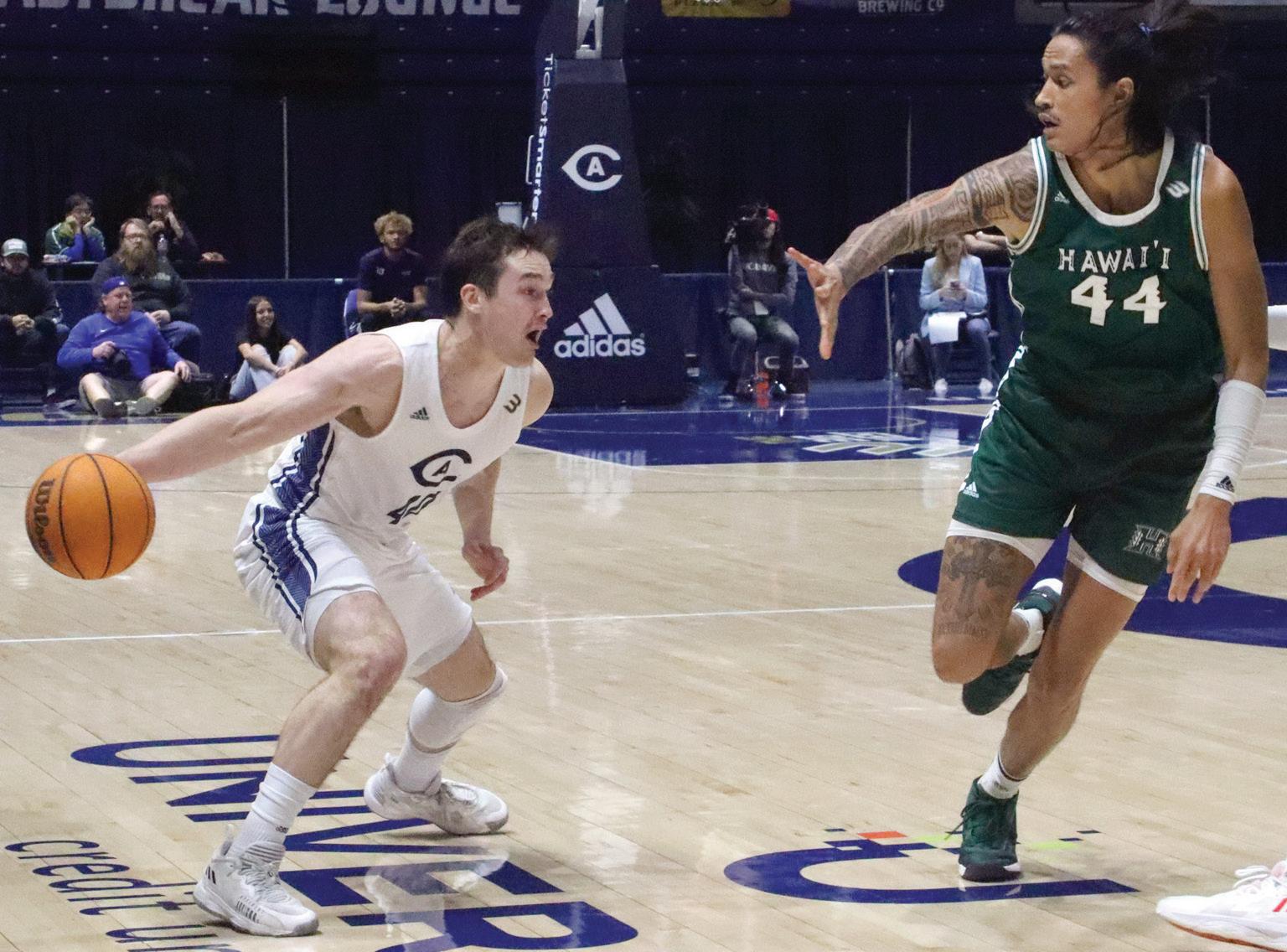
The Aggies shot a sizzling 63.6 percent from the floor, including 7 of 12 from 3-point range to the delight of the crowd of 1,961.
“The crowd was great,” said Pepper afterward. “They really energized us.”
The win gives the Aggies a 7-4 mark in Big West play and 14-9 overall, while Hawaii drops to 7-4 and 16-7. The Rainbow Warriors won the first game between the two, 74-66, in Honolulu on Dec. 29 to open the conference season.
Thursday night it was Hawaii that had the hot hand early as the Rainbow Warriors forged a 28-19 lead and appeared ready to run away and hide.
At that point, however, the Aggies went on an 18-3 run to take a 37-31 lead at the half and never let their visitors back into the game over the final 20 minutes.
TY Johnson started the rally with a 3-pointer and Pepper added a driving layup. Johnson had two more baskets and Pepper added seven points, including a bank shot at the halftime buzzer.
An enthused Aggie head coach Jim Les, who watched his team turn in its most complete game of the season, said the Aggies were a bit tentative at the start, but really used stellar defense to steadily build the lead in the second half.
“We were getting great looks,” Les said.
“I liked our ball movement where guys were passing up a good shot to take a great shot. That comes from working hard in practice. Our practices have had great integrity and have been very solid. We’re getting contributions from a lot of people and that’s really paying off.”
As for the play of Pepper, who has scored 85 points in the last three games, the Aggie coach is clearly running out of superlatives.
“Defenses are designed to stop him and he still figures out a way,” Les noted.
“He’s an elite competitor and the hardest worker on the team. Nobody wants to let him down.”
As he has all year, Pepper gives great credit to his teammates for finding him with the ball for open looks.
“We’re getting the ball moving and we all know where we are on the court both offensively and defensively,” he said.
“Our mindset is to just be aggressive and we’ve really jelled at this point. Everything is clicking on and off the court.”
Johnson, a transfer from Loyola of Chicago, hit his head on the floor while driving for a reverse layup in the early going and had to leave the game until he was cleared by the UCD medical staff.
He returned at the midway point of the first half and showed no ill effects as he scored 22 points on 7 of 10
See AGGIE, Page B5
El Macero Country club has a swimming pool. Call 530-753-3363 to find out if it is available to nonmembers or join the club.
City of Davis offers Manor Pool in east Davis at 1525 Tulip Lane, and Arroyo Pool at 2000 Shasta Drive.
Booking a time can be problematic since the city insists on using antiquated software that can be hard to figure out.
First you must be registered. Then go to cityofdavis.org and click on lap swimming.
It’s only $4. If you are successful, they will send you a confirmation.
Sign up for the City of Woodland pool at 155 N. West St., which provides a welcome contrast to Davis. They use a website called SignUpGenius.
I have recommended this website to the City of Davis because it is simpler than their current software. There are several hour-long workouts a day, including Sundays. Some are reserved for Woodland residents. It costs $60 a month for non-residents, but collection is lax.
Swim America and Sweet Pea Gymnastics is mainly for kids learning to swim. It’s at 2121 Second St., #A101. Its phone number is 530-759-1214.
Schaal Aquatic Center is available through organizations such as DAM or Davis Masters Water Polo.
Water polo is played there currently on Wednesdays from 8 to 9:30 p.m. There will be practices on Monday also later this year. DAM has some workouts there in the warm months.
Get Fit Davis at 1809 Picasso Ave. Its phone number is 530-753-5282.
Get Fit Davis has an exhaustive list of membership fees for various groups. The pool is open for hourly workouts from 8:45 a.m. until 8 p.m.
They post a temperature of 79 fahrenheit for the regular pool and 90 for hot pool therapy.
— Mark Braly’s Masters Swimming column is published the first Wednesday of each month. Contact him at markbraly@sbcglobal.net.
